Inside NASA's 5-month fight to save the Voyager 1 mission in interstellar space

After working for five months to re-establish communication with the farthest-flung human-made object in existence, NASA announced this week that the Voyager 1 probe had finally phoned home.
For the engineers and scientists who work on NASA’s longest-operating mission in space, it was a moment of joy and intense relief.
“That Saturday morning, we all came in, we’re sitting around boxes of doughnuts and waiting for the data to come back from Voyager,” said Linda Spilker, the project scientist for the Voyager 1 mission at NASA’s Jet Propulsion Laboratory in Pasadena, California. “We knew exactly what time it was going to happen, and it got really quiet and everybody just sat there and they’re looking at the screen.”
When at long last the spacecraft returned the agency’s call, Spilker said the room erupted in celebration.
“There were cheers, people raising their hands,” she said. “And a sense of relief, too — that OK, after all this hard work and going from barely being able to have a signal coming from Voyager to being in communication again, that was a tremendous relief and a great feeling.”

The problem with Voyager 1 was first detected in November . At the time, NASA said it was still in contact with the spacecraft and could see that it was receiving signals from Earth. But what was being relayed back to mission controllers — including science data and information about the health of the probe and its various systems — was garbled and unreadable.
That kicked off a monthslong push to identify what had gone wrong and try to save the Voyager 1 mission.
Spilker said she and her colleagues stayed hopeful and optimistic, but the team faced enormous challenges. For one, engineers were trying to troubleshoot a spacecraft traveling in interstellar space , more than 15 billion miles away — the ultimate long-distance call.
“With Voyager 1, it takes 22 1/2 hours to get the signal up and 22 1/2 hours to get the signal back, so we’d get the commands ready, send them up, and then like two days later, you’d get the answer if it had worked or not,” Spilker said.

The team eventually determined that the issue stemmed from one of the spacecraft’s three onboard computers. Spilker said a hardware failure, perhaps as a result of age or because it was hit by radiation, likely messed up a small section of code in the memory of the computer. The glitch meant Voyager 1 was unable to send coherent updates about its health and science observations.
NASA engineers determined that they would not be able to repair the chip where the mangled software is stored. And the bad code was also too large for Voyager 1's computer to store both it and any newly uploaded instructions. Because the technology aboard Voyager 1 dates back to the 1960s and 1970s, the computer’s memory pales in comparison to any modern smartphone. Spilker said it’s roughly equivalent to the amount of memory in an electronic car key.
The team found a workaround, however: They could divide up the code into smaller parts and store them in different areas of the computer’s memory. Then, they could reprogram the section that needed fixing while ensuring that the entire system still worked cohesively.
That was a feat, because the longevity of the Voyager mission means there are no working test beds or simulators here on Earth to test the new bits of code before they are sent to the spacecraft.
“There were three different people looking through line by line of the patch of the code we were going to send up, looking for anything that they had missed,” Spilker said. “And so it was sort of an eyes-only check of the software that we sent up.”
The hard work paid off.
NASA reported the happy development Monday, writing in a post on X : “Sounding a little more like yourself, #Voyager1.” The spacecraft’s own social media account responded , saying, “Hi, it’s me.”
So far, the team has determined that Voyager 1 is healthy and operating normally. Spilker said the probe’s scientific instruments are on and appear to be working, but it will take some time for Voyager 1 to resume sending back science data.
Voyager 1 and its twin, the Voyager 2 probe, each launched in 1977 on missions to study the outer solar system. As it sped through the cosmos, Voyager 1 flew by Jupiter and Saturn, studying the planets’ moons up close and snapping images along the way.
Voyager 2, which is 12.6 billion miles away, had close encounters with Jupiter, Saturn, Uranus and Neptune and continues to operate as normal.
In 2012, Voyager 1 ventured beyond the solar system , becoming the first human-made object to enter interstellar space, or the space between stars. Voyager 2 followed suit in 2018.
Spilker, who first began working on the Voyager missions when she graduated college in 1977, said the missions could last into the 2030s. Eventually, though, the probes will run out of power or their components will simply be too old to continue operating.
Spilker said it will be tough to finally close out the missions someday, but Voyager 1 and 2 will live on as “our silent ambassadors.”
Both probes carry time capsules with them — messages on gold-plated copper disks that are collectively known as The Golden Record . The disks contain images and sounds that represent life on Earth and humanity’s culture, including snippets of music, animal sounds, laughter and recorded greetings in different languages. The idea is for the probes to carry the messages until they are possibly found by spacefarers in the distant future.
“Maybe in 40,000 years or so, they will be getting relatively close to another star,” Spilker said, “and they could be found at that point.”
Denise Chow is a reporter for NBC News Science focused on general science and climate change.
- Become A Member
- Gift Membership
- Kids Membership
- Other Ways to Give
- Explore Worlds
- Defend Earth

How We Work
- Education & Public Outreach
- Space Policy & Advocacy
- Science & Technology
- Global Collaboration
Our Results
Learn how our members and community are changing the worlds.
Our citizen-funded spacecraft successfully demonstrated solar sailing for CubeSats.
Space Topics
- Planets & Other Worlds
- Space Missions
- Space Policy
- Planetary Radio
- Space Images
The Planetary Report
The eclipse issue.
Science and splendor under the shadow.
Get Involved
Membership programs for explorers of all ages.
Get updates and weekly tools to learn, share, and advocate for space exploration.
Volunteer as a space advocate.
Support Our Mission
- Renew Membership
- Society Projects
The Planetary Fund
Accelerate progress in our three core enterprises — Explore Worlds, Find Life, and Defend Earth. You can support the entire fund, or designate a core enterprise of your choice.
- Strategic Framework
- News & Press
The Planetary Society
Know the cosmos and our place within it.
Our Mission
Empowering the world's citizens to advance space science and exploration.
- Explore Space
- Take Action
- Member Community
- Account Center
- “Exploration is in our nature.” - Carl Sagan
The Voyager missions
Highlights Voyager 1 and Voyager 2 launched in 1977 and made a grand tour of the solar system's outer planets. They are the only functioning spacecraft in interstellar space, and they are still sending back measurements of the interstellar medium. Each spacecraft carries a copy of the golden record, a missive from Earth to any alien lifeforms that may find the probes in the future.
What are the Voyager missions?
The Voyager program consists of two spacecraft: Voyager 1 and Voyager 2. Voyager 2 was actually launched first, in August 1977, but Voyager 1 was sent on a faster trajectory when it launched about two weeks later. They are the only two functioning spacecraft currently in interstellar space, beyond the environment controlled by the sun.
Voyager 2’s path took it past Jupiter in 1979, Saturn in 1981, Uranus in 1985, and Neptune in 1989. It is the only spacecraft to have visited Uranus or Neptune, and has provided much of the information that we use to characterize them now.
Because of its higher speed and more direct trajectory, Voyager 1 overtook Voyager 2 just a few months after they launched. It visited Jupiter in 1979 and Saturn in 1980. It overtook Pioneer 10 — the only other spacecraft in interstellar space thus far — in 1998 and is now the most distant artificial object from Earth.
How the Voyagers work
The two spacecraft are identical, each with a radio dish 3.7 meters (12 feet) across to transmit data back to Earth and a set of 16 thrusters to control their orientations and point their dishes toward Earth. The thrusters run on hydrazine fuel, but the electronic components of each spacecraft are powered by thermoelectric generators that run on plutonium. Each carries 11 scientific instruments, about half of which were designed just for observing planets and have now been shut off. The instruments that are now off include several cameras and spectrometers to examine the planets, as well as two radio-based experiments. Voyager 2 now has five functioning instruments: a magnetometer, a spectrometer designed to investigate plasmas, an instrument to measure low-energy charged particles and one for cosmic rays, and one that measures plasma waves. Voyager 1 only has four of those, as its plasma spectrometer is broken.
Jupiter findings
Over the course of their grand tours of the solar system, the Voyagers took tens of thousands of images and measurements that significantly changed our understanding of the outer planets.
At Jupiter, they gave us our first detailed ideas of how the planet’s atmosphere moves and evolves, showing that the Great Red Spot was a counter-clockwise rotating storm that interacted with other, smaller storms. They were also the first missions to spot a faint, dusty ring around Jupiter. Finally, they observed some of Jupiter’s moons, discovering Io’s volcanism, finding the linear features on Europa that were among the first hints that it might have an ocean beneath its surface, and granting Ganymede the title of largest moon in the solar system, a superlative that was previously thought to belong to Saturn’s moon Titan.
Saturn findings
Next, each spacecraft flew past Saturn, where they measured the composition and structure of Saturn’s atmosphere , and Voyager 1 also peered into Titan’s thick haze. Its observations led to the idea that Titan might have liquid hydrocarbons on its surface, a hypothesis that has since been verified by other missions. When the two missions observed Saturn’s rings, they found the gaps and waves that are well-known today. Voyager 1 also spotted three previously-unknown moons orbiting Saturn: Atlas, Prometheus, and Pandora.
Uranus and Neptune findings
After this, Voyager 1 headed out of the solar system, while Voyager 2 headed toward Uranus . There, it found 11 previously-unknown moons and two previously-unknown rings. Many of the phenomena it observed on Uranus remained unexplained, such as its unusual magnetic field and an unexpected lack of major temperature changes at different latitudes.
Voyager 2’s final stop, 12 years after it left Earth, was Neptune. When it arrived , it continued its streak of finding new moons with another haul of 6 small satellites, as well as finding rings around Neptune. As it did at Uranus, it observed the planet’s composition and magnetic field. It also found volcanic vents on Neptune’s huge moon Triton before it joined Voyager 1 on the way to interstellar space.
Interstellar space
Interstellar space begins at the heliopause, where the solar wind – a flow of charged particles released by the sun – is too weak to continue pushing against the interstellar medium, and the pressure from the two balances out. Voyager 1 officially entered interstellar space in August 2012, and Voyager 2 joined it in November 2018.
These exits were instrumental in enabling astronomers to determine where exactly the edge of interstellar space is, something that’s difficult to measure from within the solar system. They showed that interstellar space begins just over 18 billion kilometers (about 11 billion miles) from the sun. The spacecraft continue to send back data on the structure of the interstellar medium.
After its planetary encounters, Voyager 1 took the iconic “Pale Blue Dot” image , showing Earth from about 6 billion kilometers (3.7 billion miles) away. As of 2021 , Voyager 1 is about 155 astronomical units (14.4 billion miles) from Earth, and Voyager 2 is nearly 129 astronomical units (12 billion miles) away.
The golden records
Each Voyager spacecraft has a golden phonograph record affixed to its side, intended as time capsules from Earth to any extraterrestrial life that might find the probes sometime in the distant future. They are inscribed with a message from Jimmy Carter, the U.S. President at the time of launch, which reads: “This is a present from a small, distant world, a token of our sounds, our science, our images, our music, our thoughts and our feelings. We are attempting to survive our time so we may live into yours.”
The covers of the records have several images inscribed, including visual instructions on how to play them, a map of our solar system’s location with respect to a set of 14 pulsars, and a drawing of a hydrogen atom. They are plated with uranium – its rate of decay will allow any future discoverers of either of the records to calculate when they were created.
The records’ contents were selected by a committee chaired by Carl Sagan. Each contains 115 images, including scientific diagrams of the solar system and its planets, the flora and fauna of Earth, and examples of human culture. There are natural sounds, including breaking surf and birdsong, spoken greetings in 55 languages, an hour of brainwave recordings, and an eclectic selection of music ranging from Beethoven to Chuck Berry to a variety of folk music.
Learn more Voyager Mission Status Bulletin Archives Experience A Message From Earth - Inspired by the Voyager Golden Record Neptune, planet of wind and ice
Support missions like Voyager 1 and 2
Whether it's advocating, teaching, inspiring, or learning, you can do something for space, right now. Let's get to work.
For full functionality of this site it is necessary to enable JavaScript. Here are instructions on how to enable JavaScript in your web browser .
Voyager 1: Facts about Earth's farthest spacecraft
Voyager 1 continues to explore the cosmos along with its twin probe, Voyager 2.
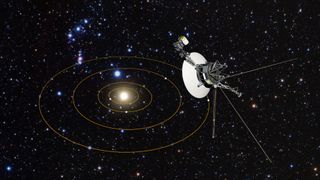
The Grand Tour
Voyager 1 jupiter flyby, voyager 1 visits saturn and its moons, voyager 1 enters interstellar space, voyager 1's interstellar adventures, additional resources.
Voyager 1 is the first spacecraft to travel beyond the solar system and reach interstellar space .
The probe launched on Sept. 5, 1977 — about two weeks after its twin Voyager 2 — and as of August 2022 is approximately 14.6 billion miles (23.5 billion kilometers) away from our planet, making it Earth 's farthest spacecraft. Voyager 1 is currently zipping through space at around 38,000 mph (17 kilometers per second), according to NASA Jet Propulsion Laboratory .
When Voyager 1 launched a mission to explore the outer planets in our solar system nobody knew how important the probe would still be 45 years later The probe has remained operational long past expectations and continues to send information about its journeys back to Earth.
Related: Celebrate 45 years of Voyager with these amazing images of our solar system (gallery)
Elizabeth Howell, Ph.D., is a staff writer in the spaceflight channel since 2022. She was contributing writer for Space.com for 10 years before that, since 2012. Elizabeth's on-site reporting includes two human spaceflight launches from Kazakhstan, three space shuttle missions in Florida, and embedded reporting from a simulated Mars mission in Utah.
Size: Voyager 1's body is about the size of a subcompact car. The boom for its magnetometer instrument extends 42.7 feet (13 meters). Weight (at launch): 1,797 pounds (815 kilograms). Launch date: Sept. 5, 1977
Jupiter flyby date: March 5, 1979
Saturn flyby date: Nov. 12, 1980.
Entered interstellar space: Aug. 25, 2012.
The spacecraft entered interstellar space in August 2012, almost 35 years after its voyage began. The discovery wasn't made official until 2013, however, when scientists had time to review the data sent back from Voyager 1.
Voyager 1 was the second of the twin spacecraft to launch, but it was the first to race by Jupiter and Saturn . The images Voyager 1 sent back have been used in schoolbooks and by many media outlets for a generation. The spacecraft also carries a special record — The Golden Record — that's designed to carry voices and music from Earth out into the cosmos.
According to NASA Jet Propulsion Laboratory (JPL) , Voyager 1 has enough fuel to keep its instruments running until at least 2025. By then, the spacecraft will be approximately 13.8 billion miles (22.1 billion kilometers) away from the sun.
The Voyager missions took advantage of a special alignment of the outer planets that happens just once every 176 years. This alignment allows spacecraft to gravitationally "slingshot" from one planet to the next, making the most efficient use of their limited fuel.
NASA originally planned to send two spacecraft past Jupiter, Saturn and Pluto and two other probes past Jupiter, Uranus and Neptune . Budgetary reasons forced the agency to scale back its plans, but NASA still got a lot out of the two Voyagers it launched.
Voyager 2 flew past Jupiter, Saturn, Uranus and Neptune , while Voyager 1 focused on Jupiter and Saturn.
Recognizing that the Voyagers would eventually fly to interstellar space, NASA authorized the production of two Golden Records to be placed on board the spacecraft. Sounds ranging from whale calls to the music of Chuck Berry were placed on board, as well as spoken greetings in 55 languages.
The 12-inch-wide (30 centimeters), gold-plated copper disks also included pictorials showing how to operate them and the position of the sun among nearby pulsars (a type of fast-spinning stellar corpse known as a neutron star ), in case extraterrestrials someday stumbled onto the spacecraft and wondered where they came from.
Both spacecraft are powered by three radioisotope thermoelectric generators , devices that convert the heat released by the radioactive decay of plutonium to electricity. Both probes were outfitted with 10 scientific instruments, including a two-camera imaging system, multiple spectrometers, a magnetometer and gear that detects low-energy charged particles and high-energy cosmic rays . Mission team members have also used the Voyagers' communications system to help them study planets and moons, bringing the total number of scientific investigations on each craft to 11.
Voyager 1 almost didn't get off the ground at its launch , as its rocket came within 3.5 seconds of running out of fuel on Sept. 5, 1977.
But the probe made it safely to space and raced past its twin after launch, getting beyond the main asteroid belt between Mars and Jupiter before Voyager 2 did. Voyager 1's first pictures of Jupiter beamed back to Earth in April 1978, when the probe was 165 million miles (266 million kilometers) from home.
According to NASA , each voyager probe has about 3 million times less memory than a mobile phone and transmits data approximately 38,000 times slower than a 5g internet connection.
To NASA's surprise, in March 1979 Voyager 1 spotted a thin ring circling the giant planet. It found two new moons as well — Thebe and Metis. Additionally, Voyager 1 sent back detailed pictures of Jupiter's big Galilean moons ( Io , Europa , Ganymede and Callisto ) as well as Amalthea .
Like the Pioneer spacecraft before it , Voyager's look at Jupiter's moons revealed them to be active worlds of their own. And Voyager 1 made some intriguing discoveries about these natural satellites. For example, Io's many volcanoes and mottled yellow-brown-orange surface showed that, like planets, moons can have active interiors.
Additionally, Voyager 1 sent back photos of Europa showing a relatively smooth surface broken up by lines, hinting at ice and maybe even an ocean underneath. (Subsequent observations and analyses have revealed that Europa likely harbors a huge subsurface ocean of liquid water, which may even be able to support Earth-like life .)
Voyager 1's closest approach to Jupiter was on March 5, 1979, when it came within 174,000 miles (280,000 km) of the turbulent cloud tops. Then it was time for the probe to aim for Saturn.
Scientists only had to wait about a year, until 1980, to get close-up pictures of Saturn. Like Jupiter, the ringed planet turned out to be full of surprises.
One of Voyager 1's targets was the F ring, a thin structure discovered only the year previously by NASA's Pioneer 11 probe. Voyager's higher-resolution camera spotted two new moons, Prometheus and Pandora, whose orbits keep the icy material in the F ring in a defined orbit. It also discovered Atlas and a new ring, the G ring, and took images of several other Saturn moons.
One puzzle for astronomers was Titan , the second-largest moon in the solar system (after Jupiter's Ganymede). Close-up pictures of Titan showed nothing but orange haze, leading to years of speculation about what it was like underneath. It wouldn't be until the mid-2000s that humanity would find out, thanks to photos snapped from beneath the haze by the European Space Agency's Huygens atmospheric probe .
The Saturn encounter marked the end of Voyager 1's primary mission. The focus then shifted to tracking the 1,590-pound (720 kg) craft as it sped toward interstellar space.
Two decades before it notched that milestone, however, Voyager 1 took one of the most iconic photos in spaceflight history. On Feb. 14, 1990, the probe turned back toward Earth and snapped an image of its home planet from 3.7 billion miles (6 billion km) away. The photo shows Earth as a tiny dot suspended in a ray of sunlight.
Voyager 1 took dozens of other photos that day, capturing five other planets and the sun in a multi-image "solar system family portrait." But the Pale Blue Dot picture stands out, reminding us that Earth is a small outpost of life in an incomprehensibly vast universe.
Voyager 1 left the heliosphere — the giant bubble of charged particles that the sun blows around itself — in August 2012, popping free into interstellar space. The discovery was made public in a study published in the journal Science the following year.
The results came to light after a powerful solar eruption was recorded by Voyager 1's plasma wave instrument between April 9 and May 22, 2013. The eruption caused electrons near Voyager 1 to vibrate. From the oscillations, researchers discovered that Voyager 1's surroundings had a higher density than what is found just inside the heliosphere.
It seems contradictory that electron density is higher in interstellar space than it is in the sun's neighborhood. But researchers explained that, at the edge of the heliosphere, the electron density is dramatically low compared with locations near Earth.
Researchers then backtracked through Voyager 1's data and nailed down the official departure date to Aug. 25, 2012. The date was fixed not only by the electron oscillations but also by the spacecraft's measurements of charged solar particles.
On that fateful day — which was the same day that Apollo 11 astronaut Neil Armstrong died — the probe saw a 1,000-fold drop in these particles and a 9% increase in galactic cosmic rays that come from outside the solar system . At that point, Voyager 1 was 11.25 billion miles (18.11 billion km) from the sun, or about 121 astronomical units (AU).
One AU is the average Earth-sun distance — about 93 million miles (150 million km).
You can keep tabs on the Voyager 1's current distance and mission status on this NASA website .
Since flying into interstellar space, Voyager 1 has sent back a variety of valuable information about conditions in this zone of the universe . Its discoveries include showing that cosmic radiation out there is very intense, and demonstrating how charged particles from the sun interact with those emitted by other stars , mission project scientist Ed Stone, of the California Institute of Technology in Pasadena, told Space.com in September 2017 .
The spacecraft's capabilities continue to astound engineers. In December 2017, for example, NASA announced that Voyager 1 successfully used its backup thrusters to orient itself to "talk" with Earth . The trajectory correction maneuver (TCM) thrusters hadn't been used since November 1980, during Voyager 1's flyby of Saturn. Since then, the spacecraft had primarily used its standard attitude-control thrusters to swing the spacecraft in the right orientation to communicate with Earth.
As the performance of the attitude-control thrusters began to deteriorate, however, NASA decided to test the TCM thrusters — an idea that could extend Voyager 1's operational life. That test ultimately succeeded.
"With these thrusters that are still functional after 37 years without use, we will be able to extend the life of the Voyager 1 spacecraft by two to three years," Voyager project manager Suzanne Dodd, of NASA's Jet Propulsion, Laboratory (JPL) in Southern California, said in a statement in December 2017 .
Mission team members have taken other measures to extend Voyager 1's life as well. For example, they turned off the spacecraft's cameras shortly after the Pale Blue Dot photo was taken to help conserve Voyager 1's limited power supply. (The cameras wouldn't pick up much in the darkness of deep space anyway.) Over the years, the mission team has turned off five other scientific instruments as well, leaving Voyager 1 with four that are still functioning — the Cosmic Ray Subsystem, the Low-Energy Charged Particles instrument, the Magnetometer and the Plasma Wave Subsystem. (Similar measures have been taken with Voyager 2, which currently has five operational instruments .)
The Voyager spacecraft each celebrated 45 years in space in 2022, a monumental milestone for the twin probes.
"Over the last 45 years, the Voyager missions have been integral in providing this knowledge and have helped change our understanding of the sun and its influence in ways no other spacecraft can," says Nicola Fox, director of the Heliophysics Division at NASA Headquarters in Washington, in a NASA statement .
"Today, as both Voyagers explore interstellar space, they are providing humanity with observations of uncharted territory," said Linda Spilker, Voyager's deputy project scientist at JPL in the same NASA statement.
"This is the first time we've been able to directly study how a star, our Sun, interacts with the particles and magnetic fields outside our heliosphere, helping scientists understand the local neighborhood between the stars, upending some of the theories about this region, and providing key information for future missions." Spilker continues.
Voyager 1's next big encounter will take place in 40,000 years when the probe comes within 1.7 light-years of the star AC +79 3888. (The star is roughly 17.5 light-years from Earth.) However, Voyager 1's falling power supply means it will probably stop collecting scientific data around 2025.
You can learn much more about both Voyagers' design, scientific instruments and mission goals at JPL's Voyager site . NASA has lots of in-depth information about the Pale Blue Dot photo, including Carl Sagan's large role in making it happen, here . And if you're interested in the Golden Record, check out this detailed New Yorker piece by Timothy Ferris, who produced the historic artifact. Explore the history of Voyager with this interactive timeline courtesy of NASA.
Bibliography
- Bell, Jim. " The Interstellar Age: Inside the Forty-Year Voyager Mission ," Dutton, 2015.
- Landau, Elizabeth. "The Voyagers in popular culture," Dec. 1, 2017. https://www.nasa.gov/feature/jpl/the-voyagers-in-popular-culture
- PBS, "Voyager: A history in photos." https://www.pbs.org/the-farthest/mission/voyager-history-photos/
Join our Space Forums to keep talking space on the latest missions, night sky and more! And if you have a news tip, correction or comment, let us know at: [email protected].
Get the Space.com Newsletter
Breaking space news, the latest updates on rocket launches, skywatching events and more!
Elizabeth Howell (she/her), Ph.D., is a staff writer in the spaceflight channel since 2022 covering diversity, education and gaming as well. She was contributing writer for Space.com for 10 years before joining full-time. Elizabeth's reporting includes multiple exclusives with the White House and Office of the Vice-President of the United States, an exclusive conversation with aspiring space tourist (and NSYNC bassist) Lance Bass, speaking several times with the International Space Station, witnessing five human spaceflight launches on two continents, flying parabolic, working inside a spacesuit, and participating in a simulated Mars mission. Her latest book, " Why Am I Taller ?", is co-written with astronaut Dave Williams. Elizabeth holds a Ph.D. and M.Sc. in Space Studies from the University of North Dakota, a Bachelor of Journalism from Canada's Carleton University and a Bachelor of History from Canada's Athabasca University. Elizabeth is also a post-secondary instructor in communications and science at several institutions since 2015; her experience includes developing and teaching an astronomy course at Canada's Algonquin College (with Indigenous content as well) to more than 1,000 students since 2020. Elizabeth first got interested in space after watching the movie Apollo 13 in 1996, and still wants to be an astronaut someday. Mastodon: https://qoto.org/@howellspace
- Daisy Dobrijevic Reference Editor
A billionaire hopes to upgrade the Hubble Telescope on a private SpaceX mission, but could it really happen?
'It's so complicated:' Boeing Starliner teams diagnosing helium leak ahead of June 1 astronaut launch
'It has an 'Aliens'-like vibe:' 'Atlas' director Brad Peyton on channeling James Cameron (exclusive)
Most Popular
- 2 Starmus 2024: Scientists and musicians unite in Bratislava to celebrate planet Earth
- 3 The future is bright for astronomy, and very expensive (op-ed)
- 4 NASA's 'Mohawk Guy' cameo in '3 Body Problem' explained (exclusive)
- 5 Black hole singularities defy physics. New research could finally do away with them.

Voyager 1 and 2: The Interstellar Mission

An image of Neptune taken by the Voyager 2 spacecraft. Image credit: NASA
NASA has beautiful photos of every planet in our solar system. We even have images of faraway Neptune , as you can see in the photo above.
Neptune is much too distant for an astronaut to travel there with a camera. So, how do we have pictures from distant locations in our solar system? Our photographers were two spacecraft, called Voyager 1 and Voyager 2!

An artist’s rendering of one of the Voyager spacecraft. Image credit: NASA
The Voyager 1 and 2 spacecraft launched from Earth in 1977. Their mission was to explore Jupiter and Saturn —and beyond to the outer planets of our solar system. This was a big task. No human-made object had ever attempted a journey like that before.
The two spacecraft took tens of thousands of pictures of Jupiter and Saturn and their moons. The pictures from Voyager 1 and 2 allowed us to see lots of things for the first time. For example, they captured detailed photos of Jupiter's clouds and storms, and the structure of Saturn's rings .

Image of storms on Jupiter taken by the Voyager 1 spacecraft. Image credit: NASA
Voyager 1 and 2 also discovered active volcanoes on Jupiter's moon Io , and much more. Voyager 2 also took pictures of Uranus and Neptune. Together, the Voyager missions discovered 22 moons.
Since then, these spacecraft have continued to travel farther away from us. Voyager 1 and 2 are now so far away that they are in interstellar space —the region between the stars. No other spacecraft have ever flown this far away.
Where will Voyager go next?
Watch this video to find out what's beyond our solar system!
Both spacecraft are still sending information back to Earth. This data will help us learn about conditions in the distant solar system and interstellar space.
The Voyagers have enough fuel and power to operate until 2025 and beyond. Sometime after this they will not be able to communicate with Earth anymore. Unless something stops them, they will continue to travel on and on, passing other stars after many thousands of years.
Each Voyager spacecraft also carries a message. Both spacecraft carry a golden record with scenes and sounds from Earth. The records also contain music and greetings in different languages. So, if intelligent life ever find these spacecraft, they may learn something about Earth and us as well!

A photo of the golden record that was sent into space on both Voyager 1 and Voyager 2. Image credit: NASA/JPL-Caltech
More about our universe!

Where does interstellar space begin?

Searching for other planets like ours

Play Galactic Explorer!
If you liked this, you may like:

- The Contents
- The Making of
- Where Are They Now
- Frequently Asked Questions
- Q & A with Ed Stone
golden record
Where are they now.
- frequently asked questions
- Q&A with Ed Stone
The Voyager Planetary Mission
The twin spacecraft Voyager 1 and Voyager 2 were launched by NASA in separate months in the summer of 1977 from Cape Canaveral, Florida. As originally designed, the Voyagers were to conduct closeup studies of Jupiter and Saturn, Saturn's rings, and the larger moons of the two planets.
To accomplish their two-planet mission, the spacecraft were built to last five years. But as the mission went on, and with the successful achievement of all its objectives, the additional flybys of the two outermost giant planets, Uranus and Neptune, proved possible -- and irresistible to mission scientists and engineers at the Voyagers' home at the Jet Propulsion Laboratory in Pasadena, California.
As the spacecraft flew across the solar system, remote-control reprogramming was used to endow the Voyagers with greater capabilities than they possessed when they left the Earth. Their two-planet mission became four. Their five-year lifetimes stretched to 12 and more.
Eventually, between them, Voyager 1 and 2 would explore all the giant outer planets of our solar system, 48 of their moons, and the unique systems of rings and magnetic fields those planets possess.
Had the Voyager mission ended after the Jupiter and Saturn flybys alone, it still would have provided the material to rewrite astronomy textbooks. But having doubled their already ambitious itineraries, the Voyagers returned to Earth information over the years that has revolutionized the science of planetary astronomy, helping to resolve key questions while raising intriguing new ones about the origin and evolution of the planets in our solar system.
History of the Voyager Mission
The Voyager mission was designed to take advantage of a rare geometric arrangement of the outer planets in the late 1970s and the 1980s which allowed for a four-planet tour for a minimum of propellant and trip time. This layout of Jupiter, Saturn, Uranus and Neptune, which occurs about every 175 years, allows a spacecraft on a particular flight path to swing from one planet to the next without the need for large onboard propulsion systems. The flyby of each planet bends the spacecraft's flight path and increases its velocity enough to deliver it to the next destination. Using this "gravity assist" technique, first demonstrated with NASA's Mariner 10 Venus/Mercury mission in 1973-74, the flight time to Neptune was reduced from 30 years to 12.
While the four-planet mission was known to be possible, it was deemed to be too expensive to build a spacecraft that could go the distance, carry the instruments needed and last long enough to accomplish such a long mission. Thus, the Voyagers were funded to conduct intensive flyby studies of Jupiter and Saturn only. More than 10,000 trajectories were studied before choosing the two that would allow close flybys of Jupiter and its large moon Io, and Saturn and its large moon Titan; the chosen flight path for Voyager 2 also preserved the option to continue on to Uranus and Neptune.
From the NASA Kennedy Space Center at Cape Canaveral, Florida, Voyager 2 was launched first, on August 20, 1977; Voyager 1 was launched on a faster, shorter trajectory on September 5, 1977. Both spacecraft were delivered to space aboard Titan-Centaur expendable rockets.
The prime Voyager mission to Jupiter and Saturn brought Voyager 1 to Jupiter on March 5, 1979, and Saturn on November 12, 1980, followed by Voyager 2 to Jupiter on July 9, 1979, and Saturn on August 25, 1981.
Voyager 1's trajectory, designed to send the spacecraft closely past the large moon Titan and behind Saturn's rings, bent the spacecraft's path inexorably northward out of the ecliptic plane -- the plane in which most of the planets orbit the Sun. Voyager 2 was aimed to fly by Saturn at a point that would automatically send the spacecraft in the direction of Uranus.
After Voyager 2's successful Saturn encounter, it was shown that Voyager 2 would likely be able to fly on to Uranus with all instruments operating. NASA provided additional funding to continue operating the two spacecraft and authorized JPL to conduct a Uranus flyby. Subsequently, NASA also authorized the Neptune leg of the mission, which was renamed the Voyager Neptune Interstellar Mission.
Voyager 2 encountered Uranus on January 24, 1986, returning detailed photos and other data on the planet, its moons, magnetic field and dark rings. Voyager 1, meanwhile, continues to press outward, conducting studies of interplanetary space. Eventually, its instruments may be the first of any spacecraft to sense the heliopause -- the boundary between the end of the Sun's magnetic influence and the beginning of interstellar space. (Voyager 1 entered Interstellar Space on August 25, 2012.)
Following Voyager 2's closest approach to Neptune on August 25, 1989, the spacecraft flew southward, below the ecliptic plane and onto a course that will take it, too, to interstellar space. Reflecting the Voyagers' new transplanetary destinations, the project is now known as the Voyager Interstellar Mission.
Voyager 1 is now leaving the solar system, rising above the ecliptic plane at an angle of about 35 degrees at a rate of about 520 million kilometers (about 320 million miles) a year. Voyager 2 is also headed out of the solar system, diving below the ecliptic plane at an angle of about 48 degrees and a rate of about 470 million kilometers (about 290 million miles) a year.
Both spacecraft will continue to study ultraviolet sources among the stars, and the fields and particles instruments aboard the Voyagers will continue to search for the boundary between the Sun's influence and interstellar space. The Voyagers are expected to return valuable data for two or three more decades. Communications will be maintained until the Voyagers' nuclear power sources can no longer supply enough electrical energy to power critical subsystems.
The cost of the Voyager 1 and 2 missions -- including launch, mission operations from launch through the Neptune encounter and the spacecraft's nuclear batteries (provided by the Department of Energy) -- is $865 million. NASA budgeted an additional $30 million to fund the Voyager Interstellar Mission for two years following the Neptune encounter.
Voyagers 1 and 2 are identical spacecraft. Each is equipped with instruments to conduct 10 different experiments. The instruments include television cameras, infrared and ultraviolet sensors, magnetometers, plasma detectors, and cosmic-ray and charged-particle sensors. In addition, the spacecraft radio is used to conduct experiments.
The Voyagers travel too far from the Sun to use solar panels; instead, they were equipped with power sources called radioisotope thermoelectric generators (RTGs). These devices, used on other deep space missions, convert the heat produced from the natural radioactive decay of plutonium into electricity to power the spacecraft instruments, computers, radio and other systems.
The spacecraft are controlled and their data returned through the Deep Space Network (DSN), a global spacecraft tracking system operated by JPL for NASA. DSN antenna complexes are located in California's Mojave Desert; near Madrid, Spain; and in Tidbinbilla, near Canberra, Australia.
The Voyager project manager for the Interstellar Mission is George P. Textor of JPL. The Voyager project scientist is Dr. Edward C. Stone of the California Institute of Technology. The assistant project scientist for the Jupiter flyby was Dr. Arthur L. Lane, followed by Dr. Ellis D. Miner for the Saturn, Uranus and Neptune encounters. Both are with JPL.
JUPITER Voyager 1 made its closest approach to Jupiter on March 5, 1979, and Voyager 2 followed with its closest approach occurring on July 9, 1979. The first spacecraft flew within 277,400 kilometers (172,368 miles) of the planet's cloud tops, and Voyager 2 came within 650,180 kilometers (404,003 miles).
Jupiter is the largest planet in the solar system, composed mainly of hydrogen and helium, with small amounts of methane, ammonia, water vapor, traces of other compounds and a core of melted rock and ice. Colorful latitudinal bands and atmospheric clouds and storms illustrate Jupiter's dynamic weather system. The giant planet is now known to possess 16 moons. The planet completes one orbit of the Sun each 11.8 years and its day is 9 hours, 55 minutes.
Although astronomers had studied Jupiter through telescopes on Earth for centuries, scientists were surprised by many of the Voyager findings.
The Great Red Spot was revealed as a complex storm moving in a counterclockwise direction. An array of other smaller storms and eddies were found throughout the banded clouds.
Discovery of active volcanism on the satellite Io was easily the greatest unexpected discovery at Jupiter. It was the first time active volcanoes had been seen on another body in the solar system. Together, the Voyagers observed the eruption of nine volcanoes on Io, and there is evidence that other eruptions occurred between the Voyager encounters.
Plumes from the volcanoes extend to more than 300 kilometers (190 miles) above the surface. The Voyagers observed material ejected at velocities up to a kilometer per second.
Io's volcanoes are apparently due to heating of the satellite by tidal pumping. Io is perturbed in its orbit by Europa and Ganymede, two other large satellites nearby, then pulled back again into its regular orbit by Jupiter. This tug-of-war results in tidal bulging as great as 100 meters (330 feet) on Io's surface, compared with typical tidal bulges on Earth of one meter (three feet).
It appears that volcanism on Io affects the entire jovian system, in that it is the primary source of matter that pervades Jupiter's magnetosphere -- the region of space surrounding the planet influenced by the jovian magnetic field. Sulfur, oxygen and sodium, apparently erupted by Io's many volcanoes and sputtered off the surface by impact of high-energy particles, were detected as far away as the outer edge of the magnetosphere millions of miles from the planet itself.
Europa displayed a large number of intersecting linear features in the low-resolution photos from Voyager 1. At first, scientists believed the features might be deep cracks, caused by crustal rifting or tectonic processes. The closer high-resolution photos from Voyager 2, however, left scientists puzzled: The features were so lacking in topographic relief that as one scientist described them, they "might have been painted on with a felt marker." There is a possibility that Europa may be internally active due to tidal heating at a level one-tenth or less than that of Io. Europa is thought to have a thin crust (less than 30 kilometers or 18 miles thick) of water ice, possibly floating on a 50-kilometer-deep (30-mile) ocean.
Ganymede turned out to be the largest moon in the solar system, with a diameter measuring 5,276 kilometers (3,280 miles). It showed two distinct types of terrain -- cratered and grooved -- suggesting to scientists that Ganymede's entire icy crust has been under tension from global tectonic processes.
Callisto has a very old, heavily cratered crust showing remnant rings of enormous impact craters. The largest craters have apparently been erased by the flow of the icy crust over geologic time. Almost no topographic relief is apparent in the ghost remnants of the immense impact basins, identifiable only by their light color and the surrounding subdued rings of concentric ridges.
A faint, dusty ring of material was found around Jupiter. Its outer edge is 129,000 kilometers (80,000 miles) from the center of the planet, and it extends inward about 30,000 kilometers (18,000 miles).
Two new, small satellites, Adrastea and Metis, were found orbiting just outside the ring. A third new satellite, Thebe, was discovered between the orbits of Amalthea and Io.
Jupiter's rings and moons exist within an intense radiation belt of electrons and ions trapped in the planet's magnetic field. These particles and fields comprise the jovian magnetosphere, or magnetic environment, which extends three to seven million kilometers toward the Sun, and stretches in a windsock shape at least as far as Saturn's orbit -- a distance of 750 million kilometers (460 million miles).
As the magnetosphere rotates with Jupiter, it sweeps past Io and strips away about 1,000 kilograms (one ton) of material per second. The material forms a torus, a doughnut-shaped cloud of ions that glow in the ultraviolet. Some of the torus's heavy ions migrate outward, and their pressure inflates the Jovian magnetosphere, while the more energetic sulfur and oxygen ions fall along the magnetic field into the planet's atmosphere, resulting in auroras.
Io acts as an electrical generator as it moves through Jupiter's magnetic field, developing 400,000 volts across its diameter and generating an electric current of 3 million amperes that flows along the magnetic field to the planet's ionosphere.
SATURN The Voyager 1 and 2 Saturn flybys occurred nine months apart, with the closest approaches falling on November 12 and August 25, 1981. Voyager 1 flew within 64,200 kilometers (40,000 miles) of the cloud tops, while Voyager 2 came within 41,000 kilometers (26,000 miles).
Saturn is the second largest planet in the solar system. It takes 29.5 Earth years to complete one orbit of the Sun, and its day was clocked at 10 hours, 39 minutes. Saturn is known to have at least 17 moons and a complex ring system. Like Jupiter, Saturn is mostly hydrogen and helium. Its hazy yellow hue was found to be marked by broad atmospheric banding similar to but much fainter than that found on Jupiter. Close scrutiny by Voyager's imaging systems revealed long-lived ovals and other atmospheric features generally smaller than those on Jupiter.
Perhaps the greatest surprises and the most puzzles were found by the Voyagers in Saturn's rings. It is thought that the rings formed from larger moons that were shattered by impacts of comets and meteoroids. The resulting dust and boulder- to house-size particles have accumulated in a broad plane around the planet varying in density.
The irregular shapes of Saturn's eight smallest moons indicates that they too are fragments of larger bodies. Unexpected structure such as kinks and spokes were found in addition to thin rings and broad, diffuse rings not observed from Earth. Much of the elaborate structure of some of the rings is due to the gravitational effects of nearby satellites. This phenomenon is most obviously demonstrated by the relationship between the F-ring and two small moons that "shepherd" the ring material. The variation in the separation of the moons from the ring may the ring's kinked appearance. Shepherding moons were also found by Voyager 2 at Uranus.
Radial, spoke-like features in the broad B-ring were found by the Voyagers. The features are believed to be composed of fine, dust-size particles. The spokes were observed to form and dissipate in time-lapse images taken by the Voyagers. While electrostatic charging may create spokes by levitating dust particles above the ring, the exact cause of the formation of the spokes is not well understood.
Winds blow at extremely high speeds on Saturn -- up to 1,800 kilometers per hour (1,100 miles per hour). Their primarily easterly direction indicates that the winds are not confined to the top cloud layer but must extend at least 2,000 kilometers (1,200 miles) downward into the atmosphere. The characteristic temperature of the atmosphere is 95 kelvins.
Saturn holds a wide assortment of satellites in its orbit, ranging from Phoebe, a small moon that travels in a retrograde orbit and is probably a captured asteroid, to Titan, the planet-sized moon with a thick nitrogen-methane atmosphere. Titan's surface temperature and pressure are 94 kelvins (-292 Fahrenheit) and 1.5 atmospheres. Photochemistry converts some atmospheric methane to other organic molecules, such as ethane, that is thought to accumulate in lakes or oceans. Other more complex hydrocarbons form the haze particles that eventually fall to the surface, coating it with a thick layer of organic matter. The chemistry in Titan's atmosphere may strongly resemble that which occurred on Earth before life evolved.
The most active surface of any moon seen in the Saturn system was that of Enceladus. The bright surface of this moon, marked by faults and valleys, showed evidence of tectonically induced change. Voyager 1 found the moon Mimas scarred with a crater so huge that the impact that caused it nearly broke the satellite apart.
Saturn's magnetic field is smaller than Jupiter's, extending only one or two million kilometers. The axis of the field is almost perfectly aligned with the rotation axis of the planet.
URANUS In its first solo planetary flyby, Voyager 2 made its closest approach to Uranus on January 24, 1986, coming within 81,500 kilometers (50,600 miles) of the planet's cloud tops.
Uranus is the third largest planet in the solar system. It orbits the Sun at a distance of about 2.8 billion kilometers (1.7 billion miles) and completes one orbit every 84 years. The length of a day on Uranus as measured by Voyager 2 is 17 hours, 14 minutes.
Uranus is distinguished by the fact that it is tipped on its side. Its unusual position is thought to be the result of a collision with a planet-sized body early in the solar system's history. Given its odd orientation, with its polar regions exposed to sunlight or darkness for long periods, scientists were not sure what to expect at Uranus.
Voyager 2 found that one of the most striking influences of this sideways position is its effect on the tail of the magnetic field, which is itself tilted 60 degrees from the planet's axis of rotation. The magnetotail was shown to be twisted by the planet's rotation into a long corkscrew shape behind the planet.
The presence of a magnetic field at Uranus was not known until Voyager's arrival. The intensity of the field is roughly comparable to that of Earth's, though it varies much more from point to point because of its large offset from the center of Uranus. The peculiar orientation of the magnetic field suggests that the field is generated at an intermediate depth in the interior where the pressure is high enough for water to become electrically conducting.
Radiation belts at Uranus were found to be of an intensity similar to those at Saturn. The intensity of radiation within the belts is such that irradiation would quickly darken (within 100,000 years) any methane trapped in the icy surfaces of the inner moons and ring particles. This may have contributed to the darkened surfaces of the moons and ring particles, which are almost uniformly gray in color.
A high layer of haze was detected around the sunlit pole, which also was found to radiate large amounts of ultraviolet light, a phenomenon dubbed "dayglow." The average temperature is about 60 kelvins (-350 degrees Fahrenheit). Surprisingly, the illuminated and dark poles, and most of the planet, show nearly the same temperature at the cloud tops.
Voyager found 10 new moons, bringing the total number to 15. Most of the new moons are small, with the largest measuring about 150 kilometers (about 90 miles) in diameter.
The moon Miranda, innermost of the five large moons, was revealed to be one of the strangest bodies yet seen in the solar system. Detailed images from Voyager's flyby of the moon showed huge fault canyons as deep as 20 kilometers (12 miles), terraced layers, and a mixture of old and young surfaces. One theory holds that Miranda may be a reaggregration of material from an earlier time when the moon was fractured by an violent impact.
The five large moons appear to be ice-rock conglomerates like the satellites of Saturn. Titania is marked by huge fault systems and canyons indicating some degree of geologic, probably tectonic, activity in its history. Ariel has the brightest and possibly youngest surface of all the Uranian moons and also appears to have undergone geologic activity that led to many fault valleys and what seem to be extensive flows of icy material. Little geologic activity has occurred on Umbriel or Oberon, judging by their old and dark surfaces.
All nine previously known rings were studied by the spacecraft and showed the Uranian rings to be distinctly different from those at Jupiter and Saturn. The ring system may be relatively young and did not form at the same time as Uranus. Particles that make up the rings may be remnants of a moon that was broken by a high-velocity impact or torn up by gravitational effects.
NEPTUNE When Voyager flew within 5,000 kilometers (3,000 miles) of Neptune on August 25, 1989, the planet was the most distant member of the solar system from the Sun. (Pluto once again will become most distant in 1999.)
Neptune orbits the Sun every 165 years. It is the smallest of our solar system's gas giants. Neptune is now known to have eight moons, six of which were found by Voyager. The length of a Neptunian day has been determined to be 16 hours, 6.7 minutes.
Even though Neptune receives only three percent as much sunlight as Jupiter does, it is a dynamic planet and surprisingly showed several large, dark spots reminiscent of Jupiter's hurricane-like storms. The largest spot, dubbed the Great Dark Spot, is about the size of Earth and is similar to the Great Red Spot on Jupiter. A small, irregularly shaped, eastward-moving cloud was observed "scooting" around Neptune every 16 hours or so; this "scooter," as Voyager scientists called it, could be a cloud plume rising above a deeper cloud deck.
Long, bright clouds, similar to cirrus clouds on Earth, were seen high in Neptune's atmosphere. At low northern latitudes, Voyager captured images of cloud streaks casting their shadows on cloud decks below.
The strongest winds on any planet were measured on Neptune. Most of the winds there blow westward, or opposite to the rotation of the planet. Near the Great Dark Spot, winds blow up to 2,000 kilometers (1,200 miles) an hour.
The magnetic field of Neptune, like that of Uranus, turned out to be highly tilted -- 47 degrees from the rotation axis and offset at least 0.55 radii (about 13,500 kilometers or 8,500 miles) from the physical center. Comparing the magnetic fields of the two planets, scientists think the extreme orientation may be characteristic of flows in the interiors of both Uranus and Neptune -- and not the result in Uranus's case of that planet's sideways orientation, or of any possible field reversals at either planet. Voyager's studies of radio waves caused by the magnetic field revealed the length of a Neptunian day. The spacecraft also detected auroras, but much weaker than those on Earth and other planets.
Triton, the largest of the moons of Neptune, was shown to be not only the most intriguing satellite of the Neptunian system, but one of the most interesting in all the solar system. It shows evidence of a remarkable geologic history, and Voyager 2 images showed active geyser-like eruptions spewing invisible nitrogen gas and dark dust particles several kilometers into the tenuous atmosphere. Triton's relatively high density and retrograde orbit offer strong evidence that Triton is not an original member of Neptune's family but is a captured object. If that is the case, tidal heating could have melted Triton in its originally eccentric orbit, and the moon might even have been liquid for as long as one billion years after its capture by Neptune.
An extremely thin atmosphere extends about 800 kilometer (500 miles) above Triton's surface. Nitrogen ice particles may form thin clouds a few kilometers above the surface. The atmospheric pressure at the surface is about 14 microbars, 1/70,000th the surface pressure on Earth. The surface temperature is about 38 kelvins (-391 degrees Fahrenheit) the coldest temperature of any body known in the solar system.
The new moons found at Neptune by Voyager are all small and remain close to Neptune's equatorial plane. Names for the new moons were selected from mythology's water deities by the International Astronomical Union, they are: Naiad, Thalassa, Despina, Galatea, Larissa, Proteus.
Voyager 2 solved many of the questions scientists had about Neptune's rings. Searches for "ring arcs," or partial rings, showed that Neptune's rings actually are complete, but are so diffuse and the material in them so fine that they could not be fully resolved from Earth. From the outermost in, the rings have been designated Adams, Plateau, Le Verrier and Galle.
Interstellar Mission
The spacecraft are continuing to return data about interplanetary space and some of our stellar neighbors near the edges of the Milky Way.
As the Voyagers cruise gracefully in the solar wind, their fields, particles and waves instruments are studying the space around them. In May 1993, scientists concluded that the plasma wave experiment was picking up radio emissions that originate at the heliopause -- the outer edge of our solar system.
The heliopause is the outermost boundary of the solar wind, where the interstellar medium restricts the outward flow of the solar wind and confines it within a magnetic bubble called the heliosphere. The solar wind is made up of electrically charged atomic particles, composed primarily of ionized hydrogen, that stream outward from the Sun.
Exactly where the heliopause is has been one of the great unanswered questions in space physics. By studying the radio emissions, scientists now theorize the heliopause exists some 90 to 120 astronomical units (AU) from the Sun. (One AU is equal to 150 million kilometers (93 million miles), or the distance from the Earth to the Sun.
The Voyagers have also become space-based ultraviolet observatories and their unique location in the universe gives astronomers the best vantage point they have ever had for looking at celestial objects that emit ultraviolet radiation.
The Ultraviolet Spectrometer (UVS) is the only experiment on the scan platform that is still functioning. The scan platform is parked at a fixed position and is not being articulated. The Infrared Spectrometer and Radiometer (IRIS) heater was turned off to save power on Voyager 1 on December 7, 2011. On January 21, 2014 the Scan Platform Supplemental Heater was also turned off to conserve power. The IRIS heater and the Scan Platform Heater were used to keep UVS warm. The UVS temperature has dropped to below the measurement limits of the sensor; however, UVS is still operating. The scientist expect to continue to receive data from the UVS until 2016, at which time the instrument will be turned off to save power.
Yet there are several other fields and particle instruments that can continue to send back data as long as the spacecraft stay alive. They include: the cosmic ray subsystem, the low-energy charge particle instrument, the magnetometer, the plasma subsystem, the plasma wave subsystem and the planetary radio astronomy instrument. Barring any catastrophic events, JPL should be able to retrieve this information for at least the next 20 and perhaps even the next 30 years.

Suggested Searches
- Climate Change
- Expedition 64
- Mars perseverance
- SpaceX Crew-2
- International Space Station
- View All Topics A-Z
Humans in Space
Earth & climate, the solar system, the universe, aeronautics, learning resources, news & events.

Welcome Back to Planet Earth, Expedition 70 Crew!
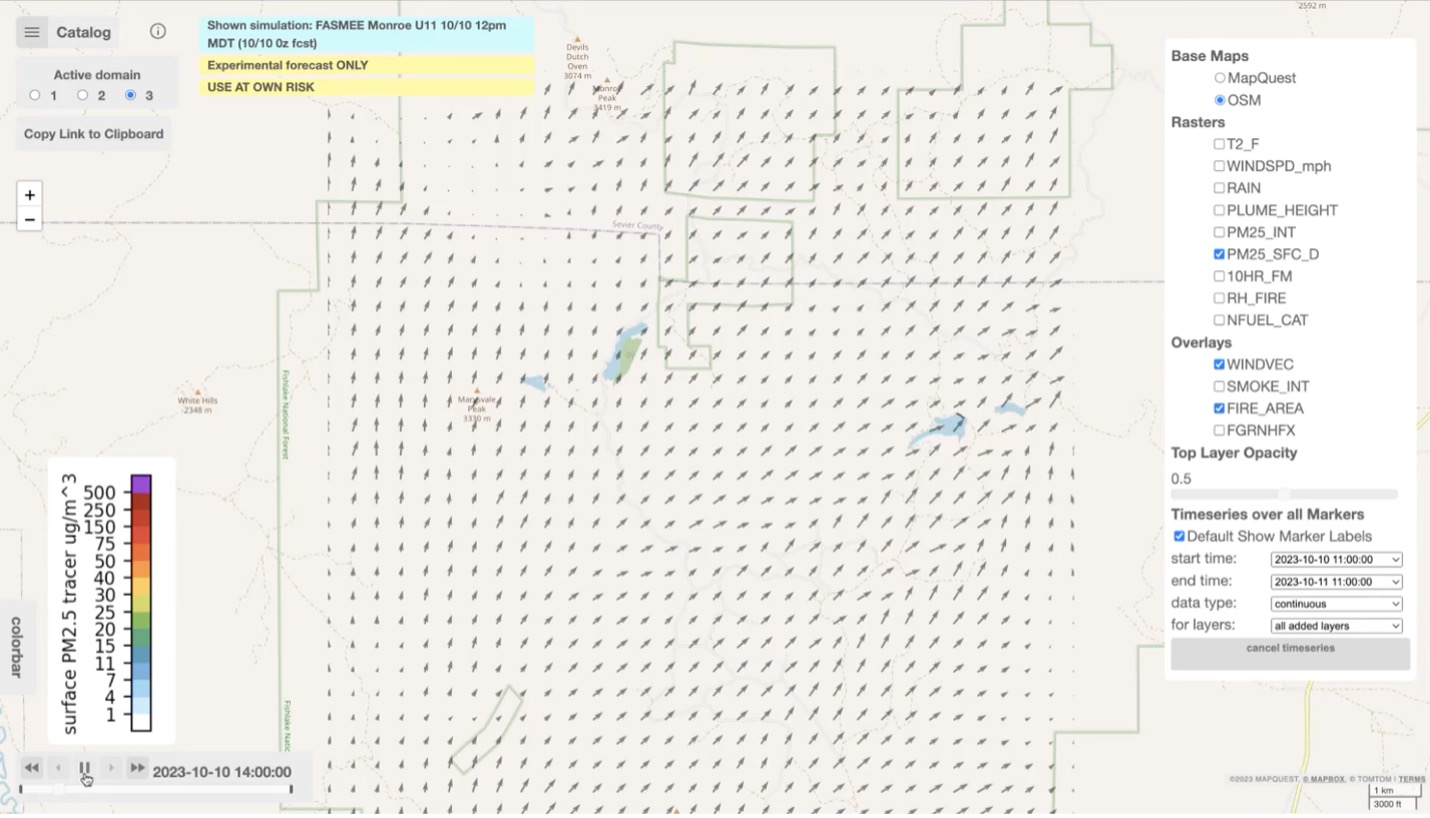
NASA “Wildfire Digital Twin” Pioneers New AI Models and Streaming Data Techniques for Forecasting Fire and Smoke
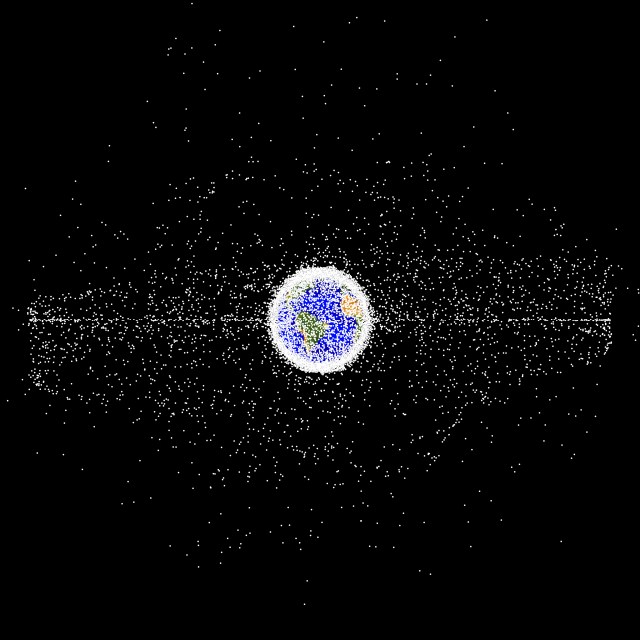
NASA Study Provides New Look at Orbital Debris, Potential Solutions
- Search All NASA Missions
- A to Z List of Missions
- Upcoming Launches and Landings
- Spaceships and Rockets
- Communicating with Missions
- James Webb Space Telescope
- Hubble Space Telescope
- Why Go to Space
- Astronauts Home
- Commercial Space
- Destinations
- Living in Space
- Explore Earth Science
- Earth, Our Planet
- Earth Science in Action
- Earth Multimedia
- Earth Science Researchers
- Pluto & Dwarf Planets
- Asteroids, Comets & Meteors
- The Kuiper Belt
- The Oort Cloud
- Skywatching
- The Search for Life in the Universe
- Black Holes
- The Big Bang
- Dark Energy & Dark Matter
- Earth Science
- Planetary Science
- Astrophysics & Space Science
- The Sun & Heliophysics
- Biological & Physical Sciences
- Lunar Science
- Citizen Science
- Astromaterials
- Aeronautics Research
- Human Space Travel Research
- Science in the Air
- NASA Aircraft
- Flight Innovation
- Supersonic Flight
- Air Traffic Solutions
- Green Aviation Tech
- Drones & You
- Technology Transfer & Spinoffs
- Space Travel Technology
- Technology Living in Space
- Manufacturing and Materials
- Science Instruments
- For Kids and Students
- For Educators
- For Colleges and Universities
- For Professionals
- Science for Everyone
- Requests for Exhibits, Artifacts, or Speakers
- STEM Engagement at NASA
- NASA's Impacts
- Centers and Facilities
- Directorates
- Organizations
- People of NASA
- Internships
- Our History
- Doing Business with NASA
- Get Involved
- Aeronáutica
- Ciencias Terrestres
- Sistema Solar
- All NASA News
- Video Series on NASA+
- Newsletters
- Social Media
- Media Resources
- Upcoming Launches & Landings
- Virtual Events
- Sounds and Ringtones
- Interactives
- STEM Multimedia
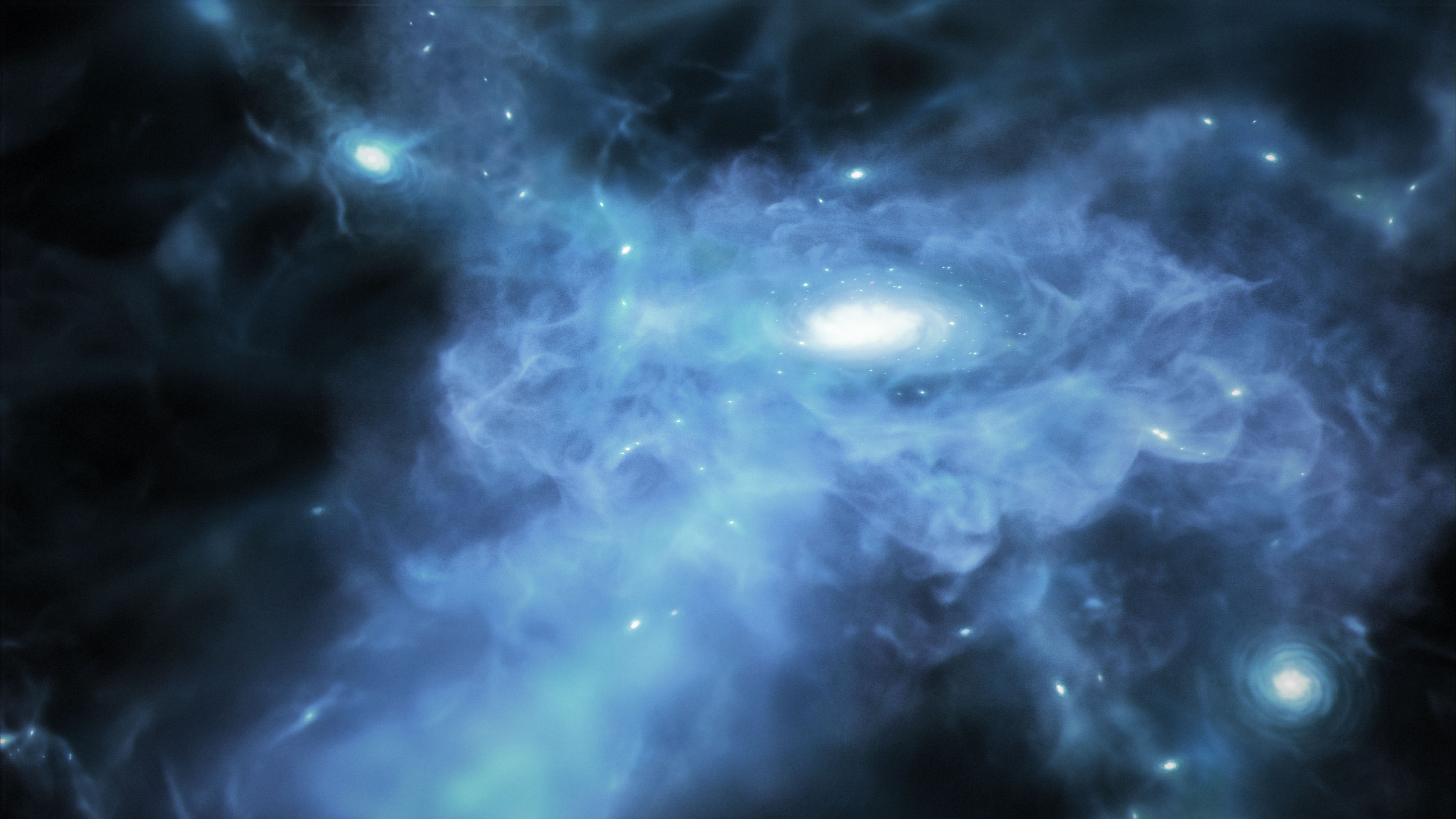
Galaxies Actively Forming in Early Universe Caught Feeding on Cold Gas
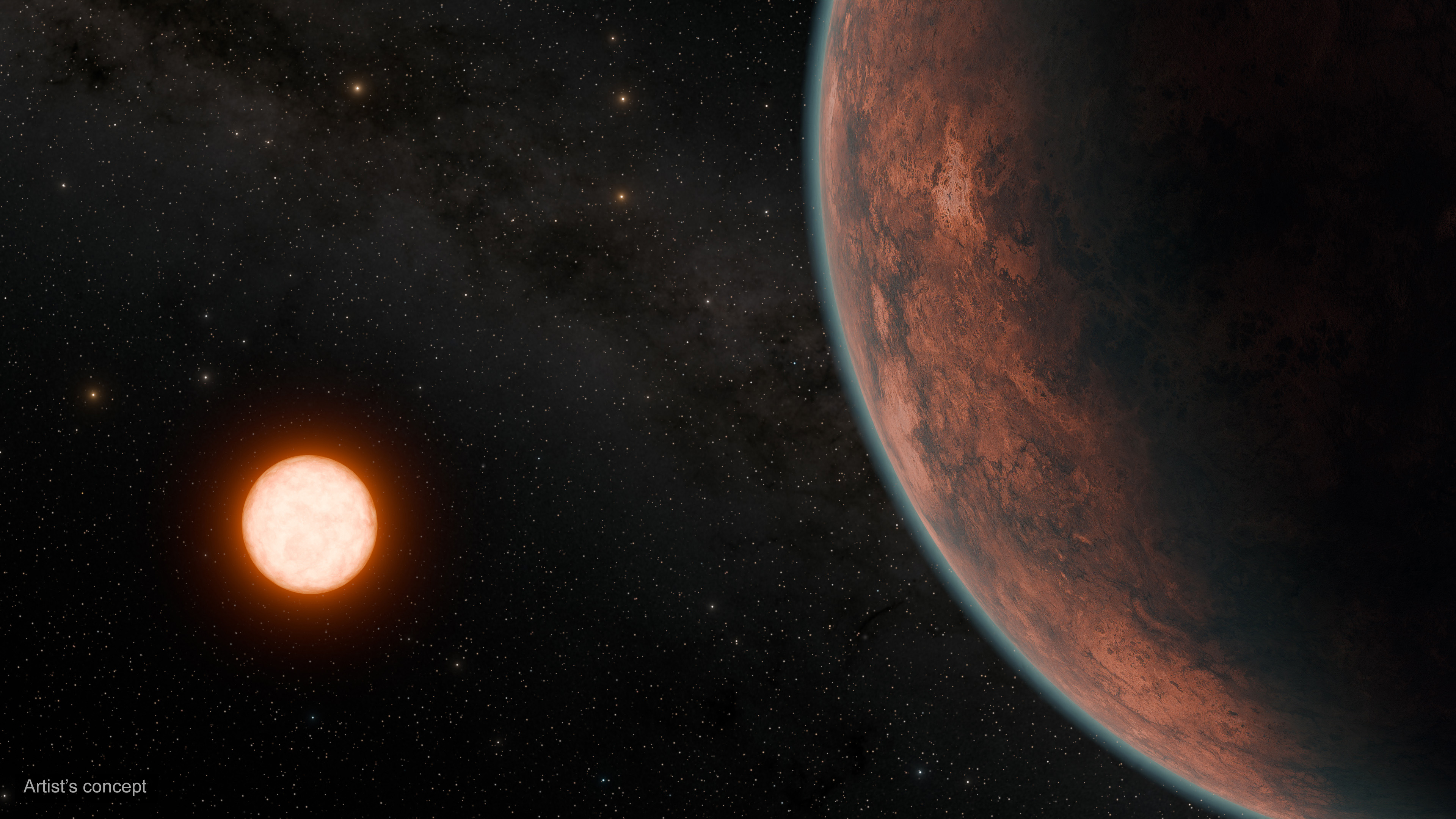
NASA’s TESS Finds Intriguing World Sized Between Earth, Venus
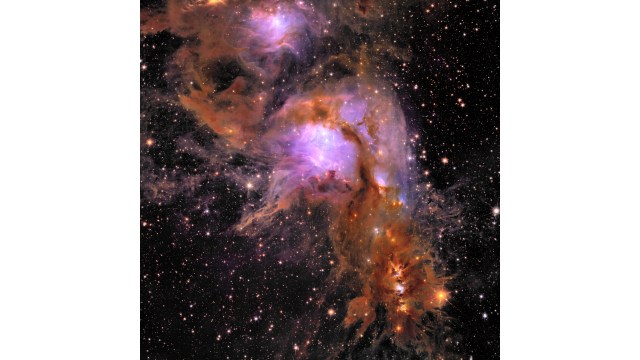
New Images From Euclid Mission Reveal Wide View of the Dark Universe

Astronaut Exercise

Eleasa Kim: Pioneering CLDP Payload Operations and Cultural Integration
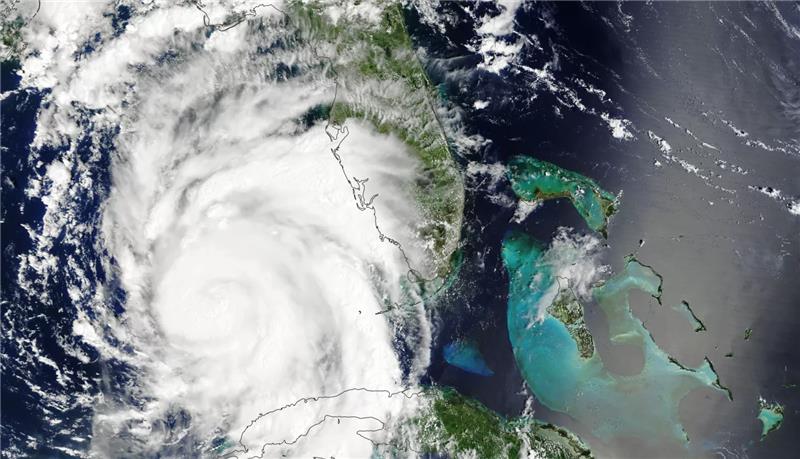

NASA, IBM Research to Release New AI Model for Weather, Climate

5 Things to Know About NASA’s Tiny Twin Polar Satellites
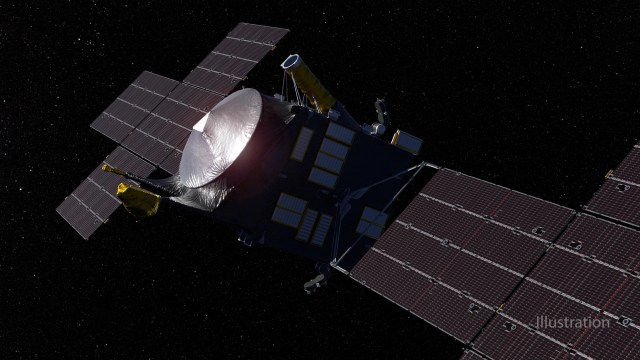
NASA’s Psyche Fires Up Its Sci-Fi-Worthy Thrusters

NASA’s Juno Provides High-Definition Views of Europa’s Icy Shell

The Next Full Moon is the Flower, Corn, or Corn Planting Moon
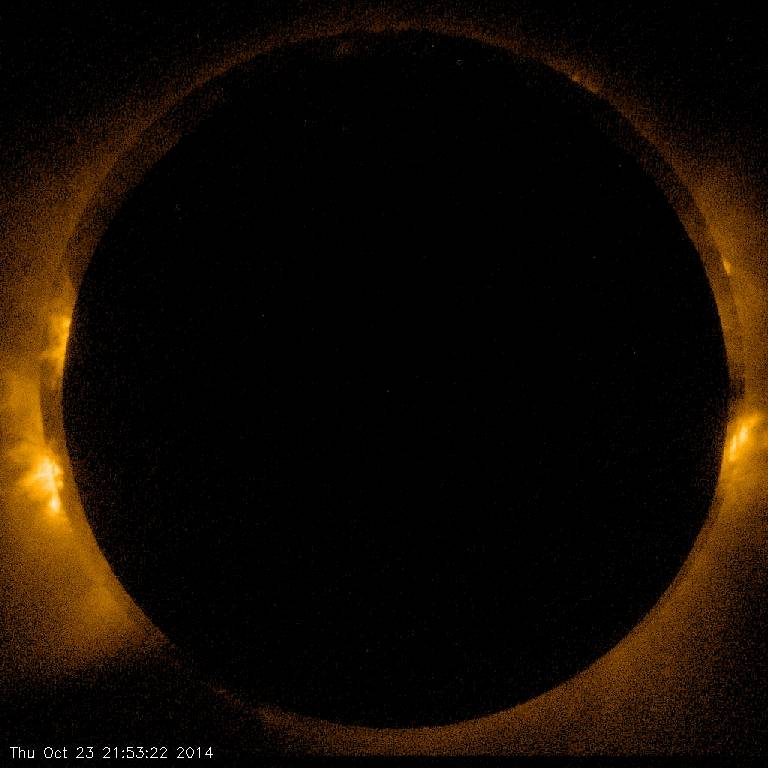
Amendment 18: Heliophysics U.S. Participating Investigator Final Text and Due Dates
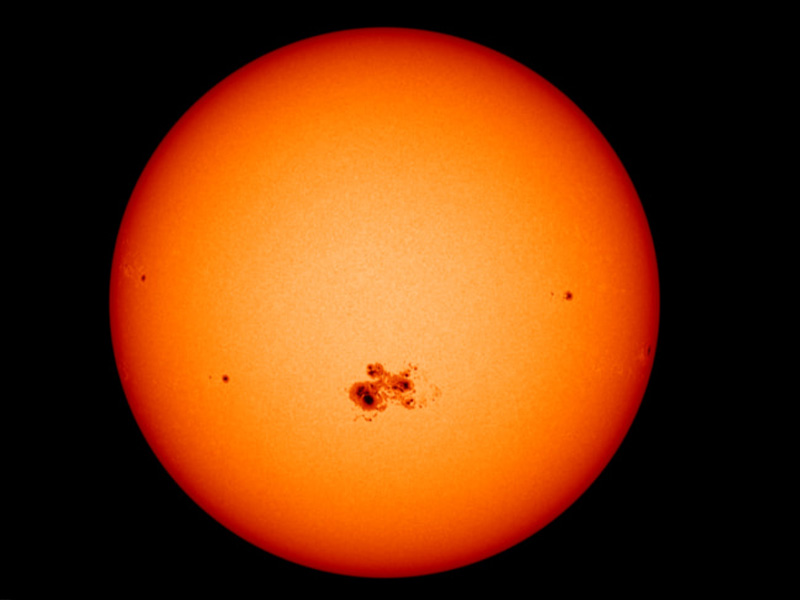
NASA’s Jack Eddy Postdoctoral Fellowship

NASA, Industry to Start Designing More Sustainable Jet Engine Core

Aviary: A New NASA Software Platform for Aircraft Modelling

NASA’s X-59 Passes Milestone Toward Safe First Flight
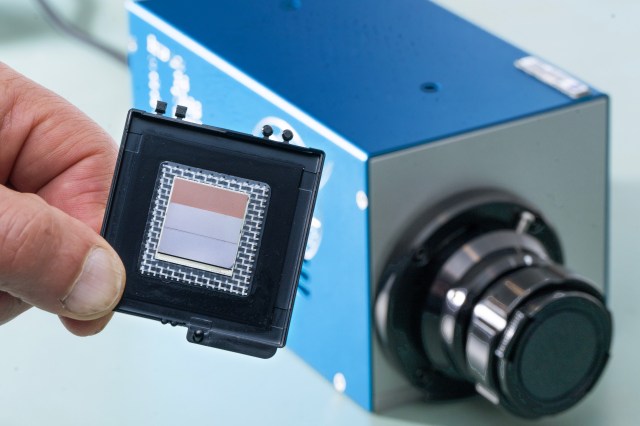
NASA’s Compact Infrared Cameras Enable New Science

Tech Today: From Spacesuits to Racing Suits

NASA Around the World: Interns Teach Virtual Lessons in Kenya
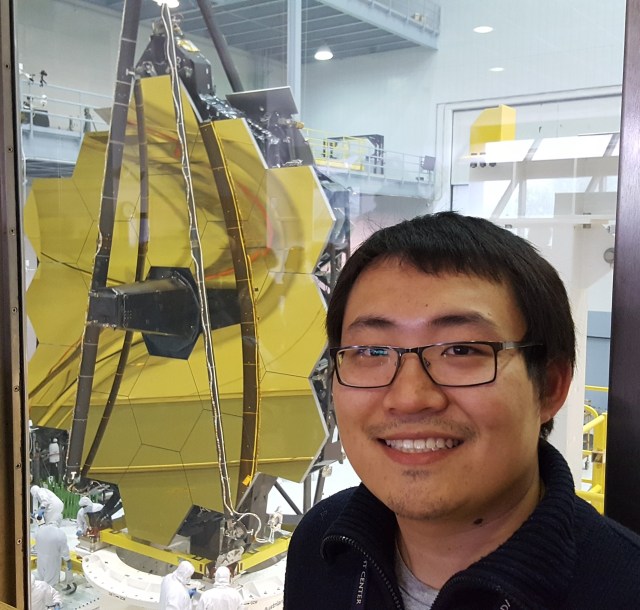
Kan Yang: Translating Science Ideas into Engineering Concepts
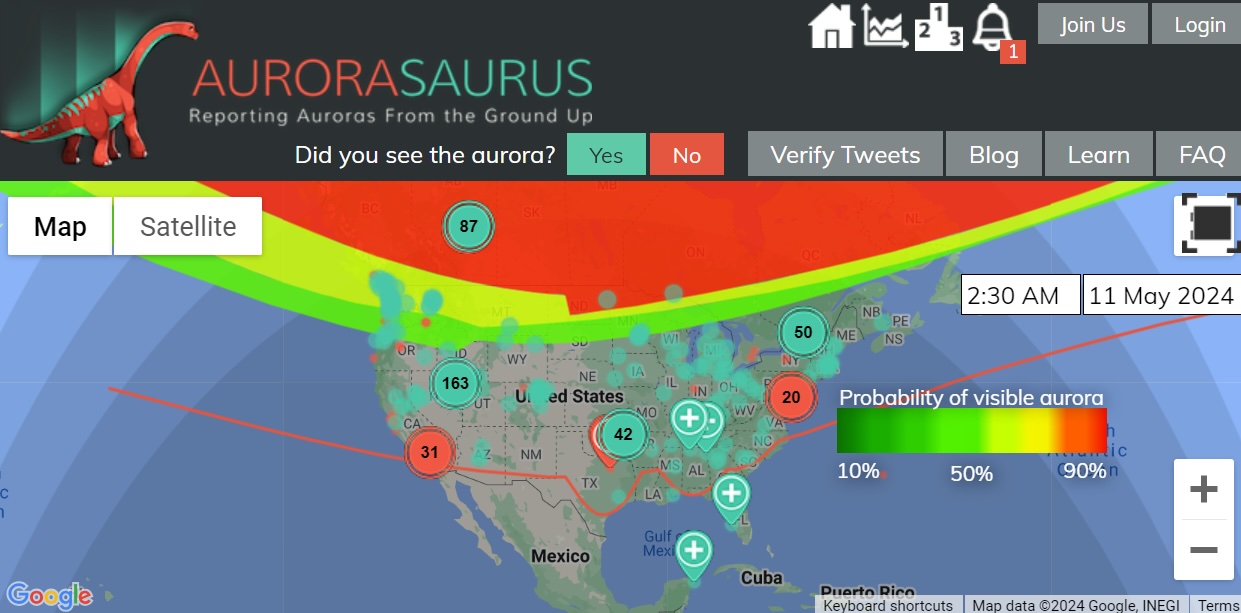
Aurorasaurus Roars During Historic Solar Storm
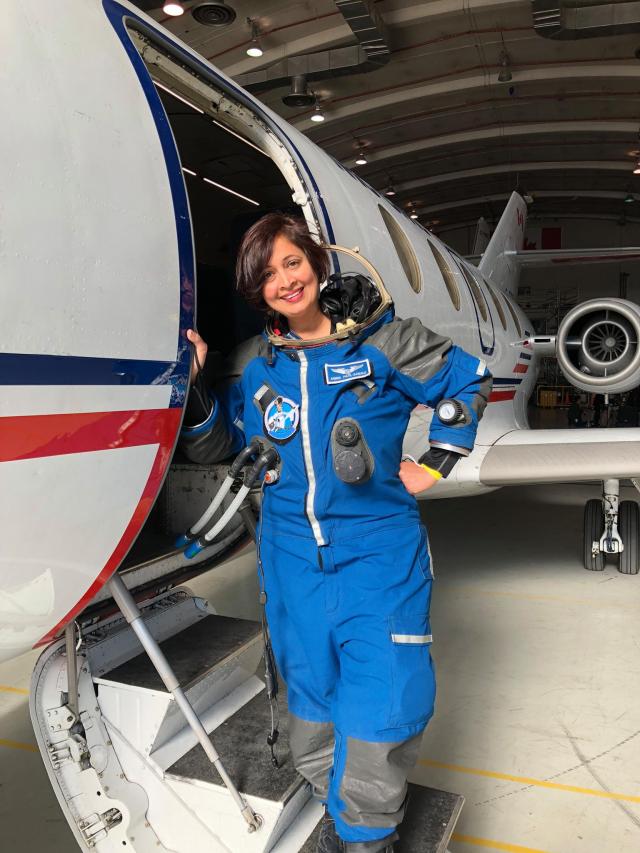
Johnson Celebrates AA and NHPI Heritage Month: Anima Patil-Sabale

Diez maneras en que los estudiantes pueden prepararse para ser astronautas

Astronauta de la NASA Marcos Berríos

Resultados científicos revolucionarios en la estación espacial de 2023
Voyager 1’s mission to the outer planet begins.

The Voyager mission was designed to take advantage of a rare geometric arrangement of the outer planets in the late 1970s and the 1980s which allowed for a four-planet tour with a minimum of propellant and trip time. This layout of Jupiter, Saturn, Uranus and Neptune, which occurs about every 175 years, allows a spacecraft on a particular flight path to swing from one planet to the next without the need for large onboard propulsion systems.
NASA’s Voyager 1 spacecraft launched after Voyager 2, on a faster, shorter trajectory. This image captures that moment in Cape Canaveral, Florida on Sept. 5, 1977.
Image credit: NASA/JPL-Caltech/KSC
- Share full article
Advertisement
Supported by
Voyager 1, First Craft in Interstellar Space, May Have Gone Dark
The 46-year-old probe, which flew by Jupiter and Saturn in its youth and inspired earthlings with images of the planet as a “Pale Blue Dot,” hasn’t sent usable data from interstellar space in months.

By Orlando Mayorquin
When Voyager 1 launched in 1977, scientists hoped it could do what it was built to do and take up-close images of Jupiter and Saturn. It did that — and much more.
Voyager 1 discovered active volcanoes, moons and planetary rings, proving along the way that Earth and all of humanity could be squished into a single pixel in a photograph, a “ pale blue dot, ” as the astronomer Carl Sagan called it. It stretched a four-year mission into the present day, embarking on the deepest journey ever into space.
Now, it may have bid its final farewell to that faraway dot.
Voyager 1 , the farthest man-made object in space, hasn’t sent coherent data to Earth since November. NASA has been trying to diagnose what the Voyager mission’s project manager, Suzanne Dodd, called the “most serious issue” the robotic probe has faced since she took the job in 2010.
The spacecraft encountered a glitch in one of its computers that has eliminated its ability to send engineering and science data back to Earth.
The loss of Voyager 1 would cap decades of scientific breakthroughs and signal the beginning of the end for a mission that has given shape to humanity’s most distant ambition and inspired generations to look to the skies.
“Scientifically, it’s a big loss,” Ms. Dodd said. “I think — emotionally — it’s maybe even a bigger loss.”
Voyager 1 is one half of the Voyager mission. It has a twin spacecraft, Voyager 2.
Launched in 1977, they were primarily built for a four-year trip to Jupiter and Saturn , expanding on earlier flybys by the Pioneer 10 and 11 probes.
The Voyager mission capitalized on a rare alignment of the outer planets — once every 175 years — allowing the probes to visit all four.
Using the gravity of each planet, the Voyager spacecraft could swing onto the next, according to NASA .
The mission to Jupiter and Saturn was a success.
The 1980s flybys yielded several new discoveries, including new insights about the so-called great red spot on Jupiter, the rings around Saturn and the many moons of each planet.
Voyager 2 also explored Uranus and Neptune , becoming in 1989 the only spacecraft to explore all four outer planets.

Voyager 1, meanwhile, had set a course for deep space, using its camera to photograph the planets it was leaving behind along the way. Voyager 2 would later begin its own trek into deep space.
“Anybody who is interested in space is interested in the things Voyager discovered about the outer planets and their moons,” said Kate Howells, the public education specialist at the Planetary Society, an organization co-founded by Dr. Sagan to promote space exploration.
“But I think the pale blue dot was one of those things that was sort of more poetic and touching,” she added.
On Valentine’s Day 1990, Voyager 1, darting 3.7 billion miles away from the sun toward the outer reaches of the solar system, turned around and snapped a photo of Earth that Dr. Sagan and others understood to be a humbling self-portrait of humanity.
“It’s known the world over, and it does connect humanity to the stars,” Ms. Dodd said of the mission.
She added: “I’ve had many, many many people come up to me and say: ‘Wow, I love Voyager. It’s what got me excited about space. It’s what got me thinking about our place here on Earth and what that means.’”
Ms. Howells, 35, counts herself among those people.
About 10 years ago, to celebrate the beginning of her space career, Ms. Howells spent her first paycheck from the Planetary Society to get a Voyager tattoo.
Though spacecraft “all kind of look the same,” she said, more people recognize the tattoo than she anticipated.
“I think that speaks to how famous Voyager is,” she said.
The Voyagers made their mark on popular culture , inspiring a highly intelligent “Voyager 6” in “Star Trek: The Motion Picture” and references on “The X Files” and “The West Wing.”
Even as more advanced probes were launched from Earth, Voyager 1 continued to reliably enrich our understanding of space.
In 2012, it became the first man-made object to exit the heliosphere, the space around the solar system directly influenced by the sun. There is a technical debate among scientists around whether Voyager 1 has actually left the solar system, but, nonetheless, it became interstellar — traversing the space between stars.
That charted a new path for heliophysics, which looks at how the sun influences the space around it. In 2018, Voyager 2 followed its twin between the stars.
Before Voyager 1, scientific data on the sun’s gases and material came only from within the heliosphere’s confines, according to Dr. Jamie Rankin, Voyager’s deputy project scientist.
“And so now we can for the first time kind of connect the inside-out view from the outside-in,” Dr. Rankin said, “That’s a big part of it,” she added. “But the other half is simply that a lot of this material can’t be measured any other way than sending a spacecraft out there.”
Voyager 1 and 2 are the only such spacecraft. Before it went offline, Voyager 1 had been studying an anomalous disturbance in the magnetic field and plasma particles in interstellar space.
“Nothing else is getting launched to go out there,” Ms. Dodd said. “So that’s why we’re spending the time and being careful about trying to recover this spacecraft — because the science is so valuable.”
But recovery means getting under the hood of an aging spacecraft more than 15 billion miles away, equipped with the technology of yesteryear. It takes 45 hours to exchange information with the craft.
It has been repeated over the years that a smartphone has hundreds of thousands of times Voyager 1’s memory — and that the radio transmitter emits as many watts as a refrigerator lightbulb.
“There was one analogy given that is it’s like trying to figure out where your cursor is on your laptop screen when your laptop screen doesn’t work,” Ms. Dodd said.
Her team is still holding out hope, she said, especially as the tantalizing 50th launch anniversary in 2027 approaches. Voyager 1 has survived glitches before, though none as serious.
Voyager 2 is still operational, but aging. It has faced its own technical difficulties too.
NASA had already estimated that the nuclear-powered generators of both spacecrafts would likely die around 2025.
Even if the Voyager interstellar mission is near its end, the voyage still has far to go.
Voyager 1 and its twin, each 40,000 years away from the next closest star, will arguably remain on an indefinite mission.
“If Voyager should sometime in its distant future encounter beings from some other civilization in space, it bears a message,” Dr. Sagan said in a 1980 interview .
Each spacecraft carries a gold-plated phonograph record loaded with an array of sound recordings and images representing humanity’s richness, its diverse cultures and life on Earth.
“A gift across the cosmic ocean from one island of civilization to another,” Dr. Sagan said.
Orlando Mayorquin is a general assignment and breaking news reporter based in New York. More about Orlando Mayorquin
What’s Up in Space and Astronomy
Keep track of things going on in our solar system and all around the universe..
Never miss an eclipse, a meteor shower, a rocket launch or any other 2024 event that’s out of this world with our space and astronomy calendar .
A dramatic blast from the sun set off the highest-level geomagnetic storm in Earth’s atmosphere, making the northern lights visible around the world .
With the help of Google Cloud, scientists who hunt killer asteroids churned through hundreds of thousands of images of the night sky to reveal 27,500 overlooked space rocks in the solar system .
A celestial image, an Impressionistic swirl of color in the center of the Milky Way, represents a first step toward understanding the role of magnetic fields in the cycle of stellar death and rebirth.
Scientists may have discovered a major flaw in their understanding of dark energy, a mysterious cosmic force . That could be good news for the fate of the universe.
Is Pluto a planet? And what is a planet, anyway? Test your knowledge here .
A 'shout' across interstellar space restores contact between Voyager 2 craft and NASA

After weeks of giving Earth the silent treatment , NASA's Voyager 2 spacecraft is once again communicating with mission control from billions of miles away.
All it took was for the ground team to send an interstellar "shout" across more than 12.3 billion miles instructing the historic probe launched in the 1970s to explore the far reaches of space to turn its antenna back to Earth.
Easy enough, right? Not so much.
NASA’s Jet Propulsion Laboratory wasn't even confident the command would be capable of reaching the wayward probe across the expansive solar system. Failure meant that the space agency would have been waiting until mid-October for Voyager 2 to automatically reorient itself after NASA lost contact with the 46-year-old spacecraft last month.
UFO hearing: Witnesses call for increased military transparency on UFOs during hearing
The array of giant radio network antennas known as the Deep Space Network detected a faint signal last week from Voyager 2, which on July 21 had inadvertently tilted its antenna a mere 2 degrees away from Earth. Though the signal was not strong enough for any data to be extracted, the faint "heartbeat" was enough to give NASA hope that the spacecraft was still operational.
In a Hail Mary effort, a Deep Space Network radio dish in Canberra, Australia sent out a message it hoped would somehow reach the craft and command it to correct its antenna orientation.
It took 18 and-a-half hours for the command to reach Voyager 2, and 37 hours total for mission controllers to know whether it was successful. But after what must have been dozens of tense hours, the team received science and telemetry data from Voyager 2 around 12:30 a.m. on Friday, indicating the craft remains operational and on its expected trajectory.
"NASA has reestablished full communications with Voyager 2," JPL announced , saying that the antenna has realigned with Earth.
Where is Voyager 2?
Voyager 2, which is nearly 46 years into its mission, is roughly 12.4 billion miles from Earth after leaving the heliosphere — the shield that protects the planets from interstellar radiation — five years ago, according to NASA.
The agency provides an interactive diagram tracking Voyager 2's path outside the solar system.
Historic probes launched in the 1970s
Voyager 2 was launched into space in 1977 from Cape Canaveral, Florida with the mission of exploring the outer solar system . Its twin probe, Voyager 1, launched two weeks later and at 15 billion miles away, has the distinction of being the farthest human-made object from Earth .
In 2012, Voyager 1 was the first spacecraft to reach interstellar space , followed in 2018 by Voyager 2.
Voyager 1's communications were not interrupted when a routine command sent its twin probe pointing in the wrong direction last month, disrupting it ability to receive commands or transmit data back to Earth.
Had NASA not reestablished contact, it wouldn't have been until Oct. 15 that Voyager 2 would have automatically repositioned its antenna to ensure it was pointed at its home planet.
'Internet apocalypse': How NASA's solar-storm studies could help save the web
Should they encounter extraterrestrial life, both Voyager 1 and 2 carry the famous " golden record ," functioning both as a time capsule and friendly Earthling greeting. The phonograph record — a 12-inch gold-plated copper disk — contains music, languages and sounds representative of Earth's various cultures and eras.
Eric Lagatta covers breaking and trending news for USA TODAY. Reach him at [email protected].

Voyager 1 Stories
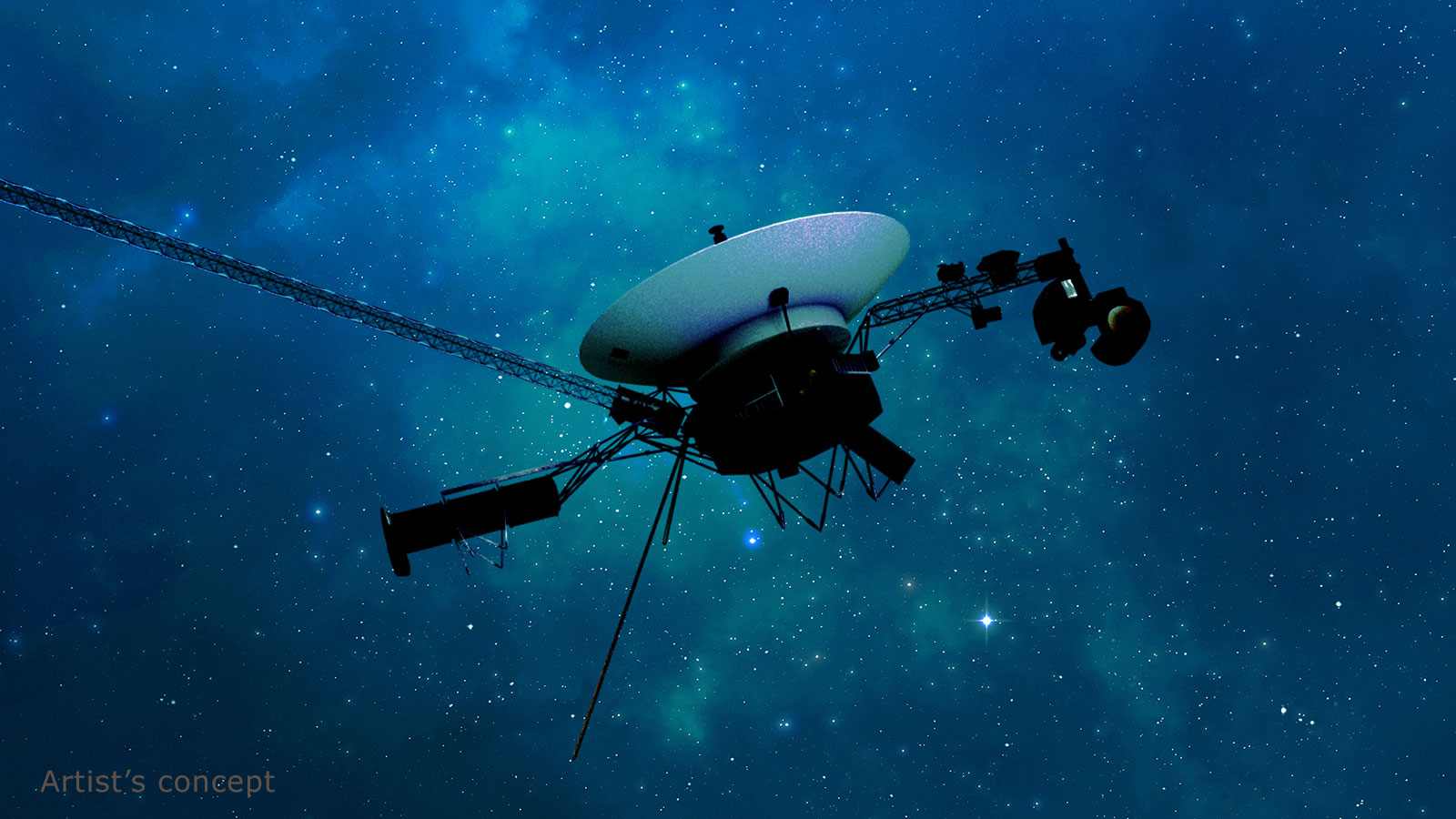
NASA’s Voyager Team Focuses on Software Patch, Thrusters
The efforts should help extend the lifetimes of the agency’s interstellar explorers. Engineers for NASA’s Voyager mission are taking steps to help make sure both spacecraft, launched in 1977, continue to explore interstellar space for years to come. One effort…
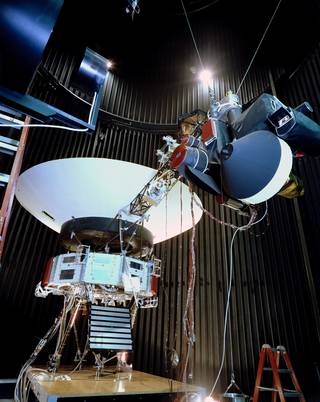
NASA’s Voyager Will Do More Science With New Power Strategy
The plan will keep Voyager 2’s science instruments turned on a few years longer than previously anticipated, enabling yet more revelations from interstellar space.
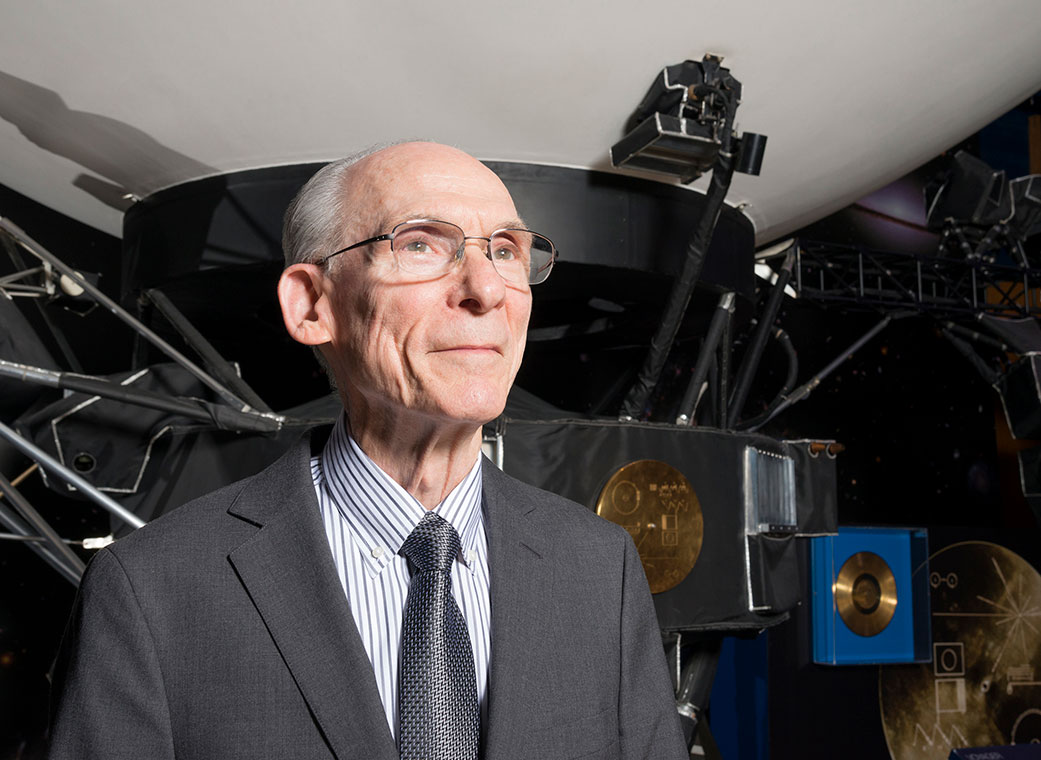
Edward Stone Retires After 50 Years as NASA Voyager’s Project Scientist
Stone’s remarkable tenure on NASA’s longest-operating mission spans decades of historic discoveries and firsts. Edward Stone has retired as the project scientist for NASA’s Voyager mission a half-century after taking on the role. Stone accepted scientific leadership of the historic…
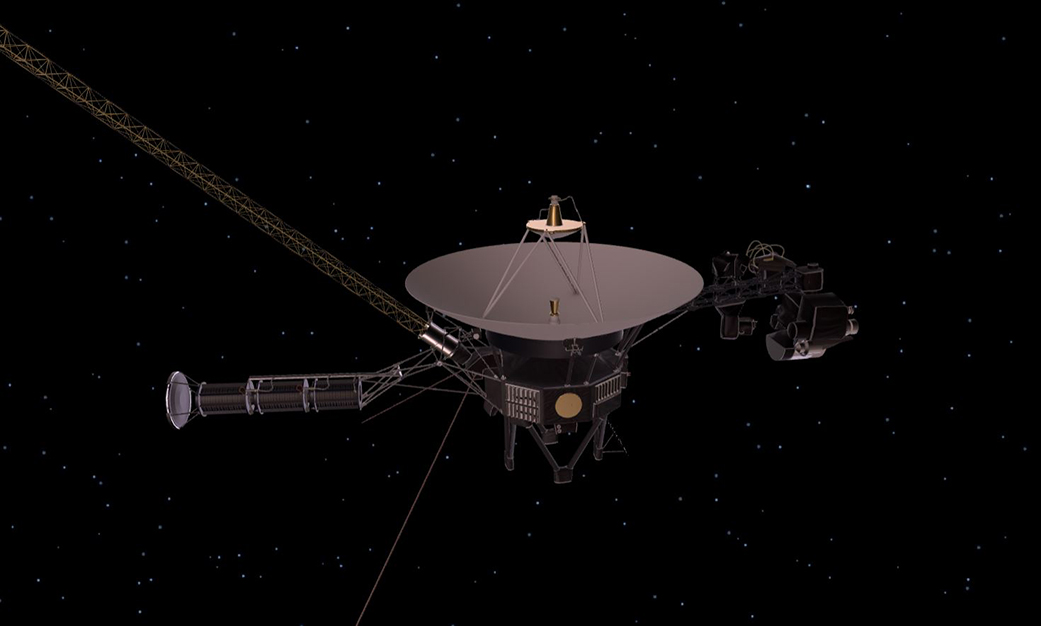
Engineers Solve Data Glitch on NASA’s Voyager 1
A critical system aboard the probe was sending garbled data about its status. Engineers have fixed the issue but are still seeking the root cause. Engineers have repaired an issue affecting data from NASA’s Voyager 1 spacecraft. Earlier this year,…
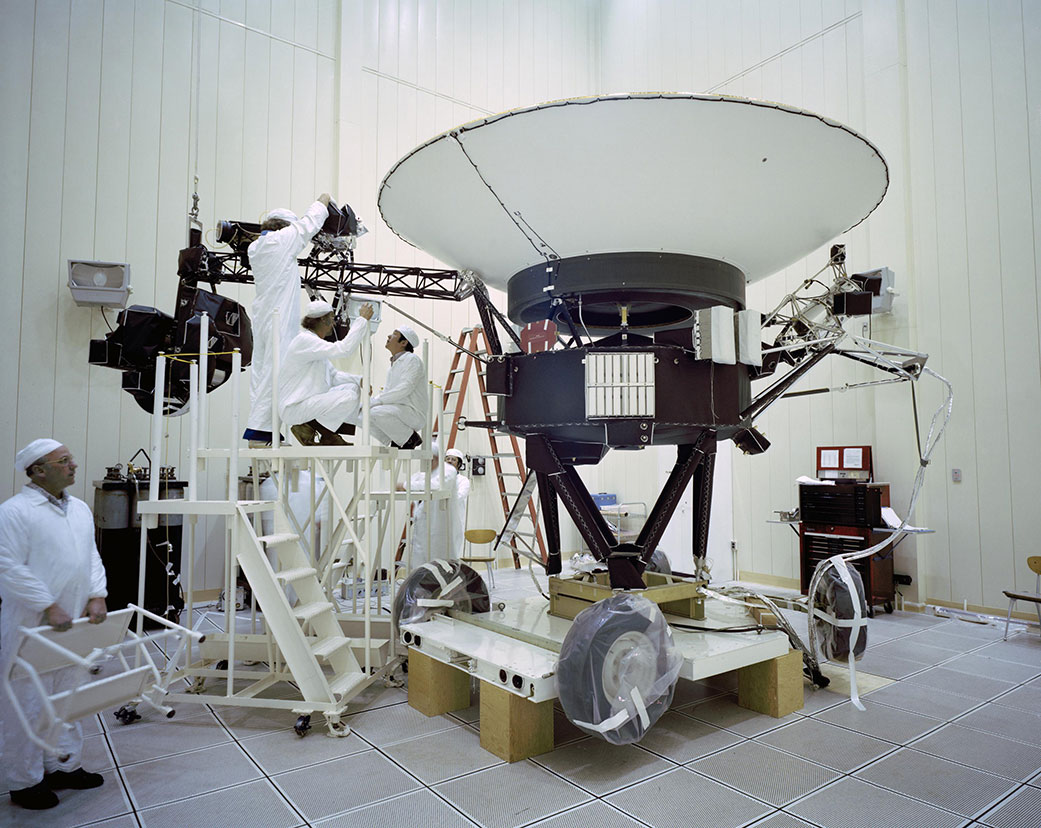
Voyager, NASA’s Longest-Lived Mission, Logs 45 Years in Space
Launched in 1977, the twin Voyager probes are NASA’s longest-operating mission and the only spacecraft ever to explore interstellar space. NASA’s twin Voyager probes have become, in some ways, time capsules of their era: They each carry an eight-track tape…
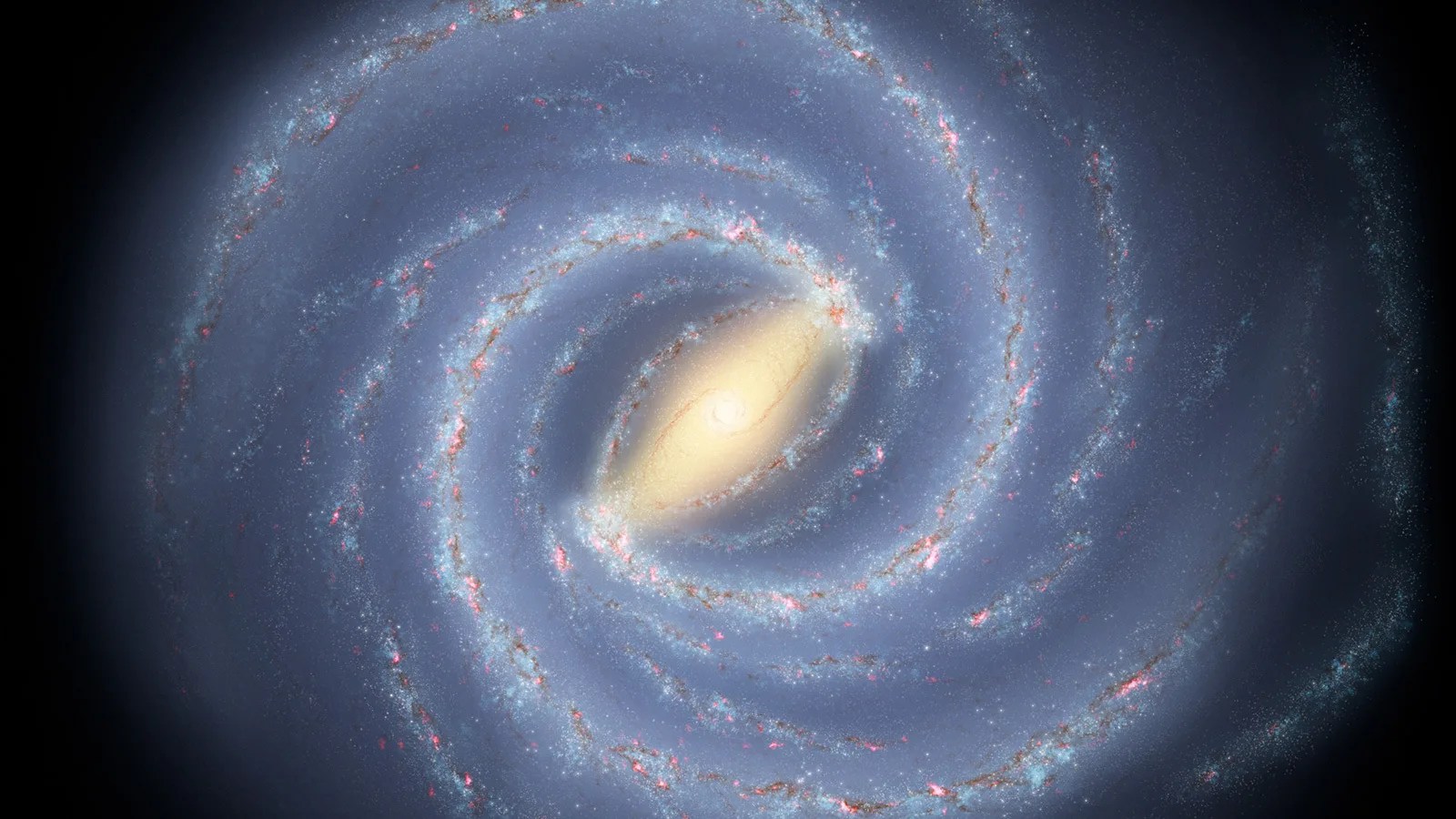
10 Things: Going Interstellar
Humanity’s great leap into interstellar space – the space between the stars – has begun. Here are 10 things we’ve learned about going interstellar.
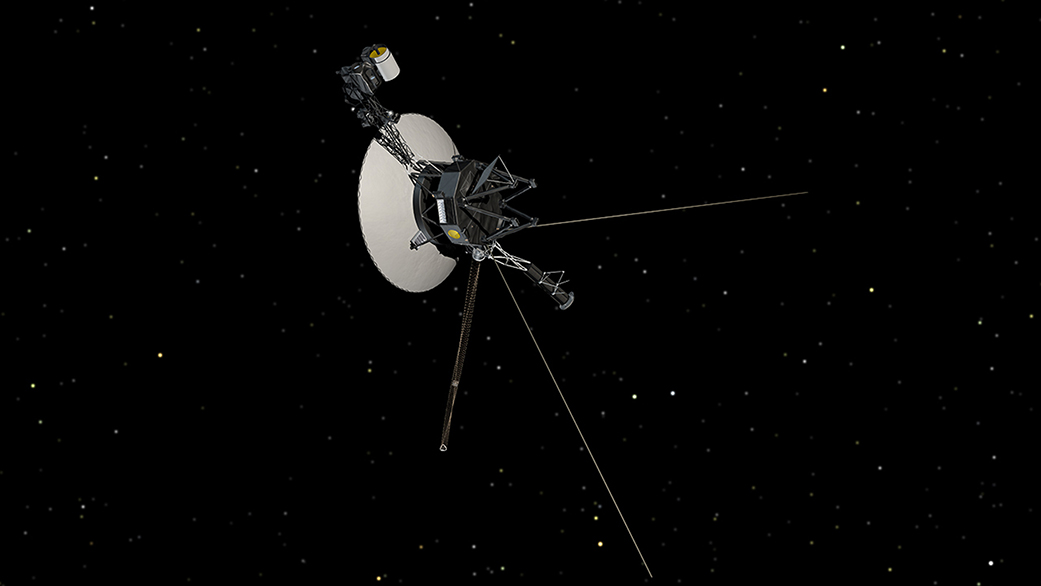
Engineers Investigating NASA’s Voyager 1 Telemetry Data
While the spacecraft continues to return science data and otherwise operate as normal, the mission team is searching for the source of a system data issue. The engineering team with NASA’s Voyager 1 spacecraft is trying to solve a mystery:…
Studying the Edge of the Sun’s Magnetic Bubble
Our corner of the universe, the solar system, is nestled inside the Milky Way galaxy, home to more than 100 billion stars. The solar system is encased in a bubble called the heliosphere, which separates us from the vast galaxy…
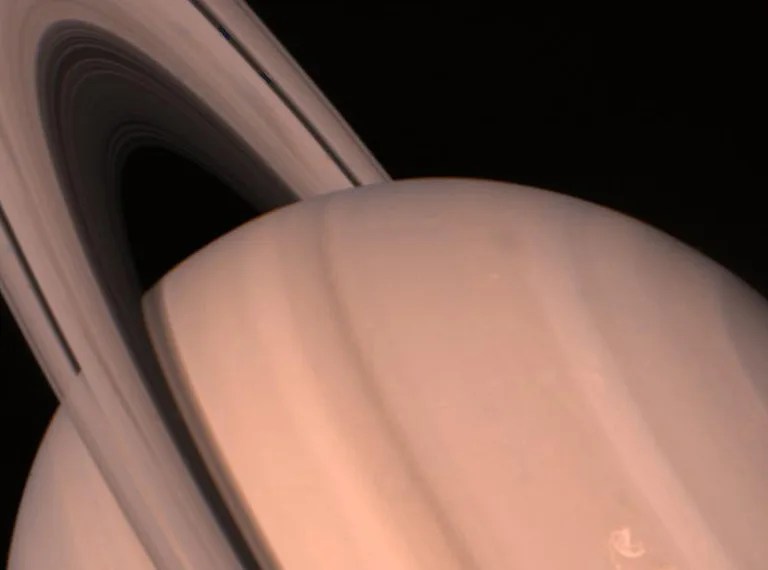
40 Years On, Remembering Voyager’s Legacy at Saturn
Voyager 2 made its closest approach to Saturn on Aug. 25, 1981. The mission revealed a planet so phenomenal scientists had to go back.
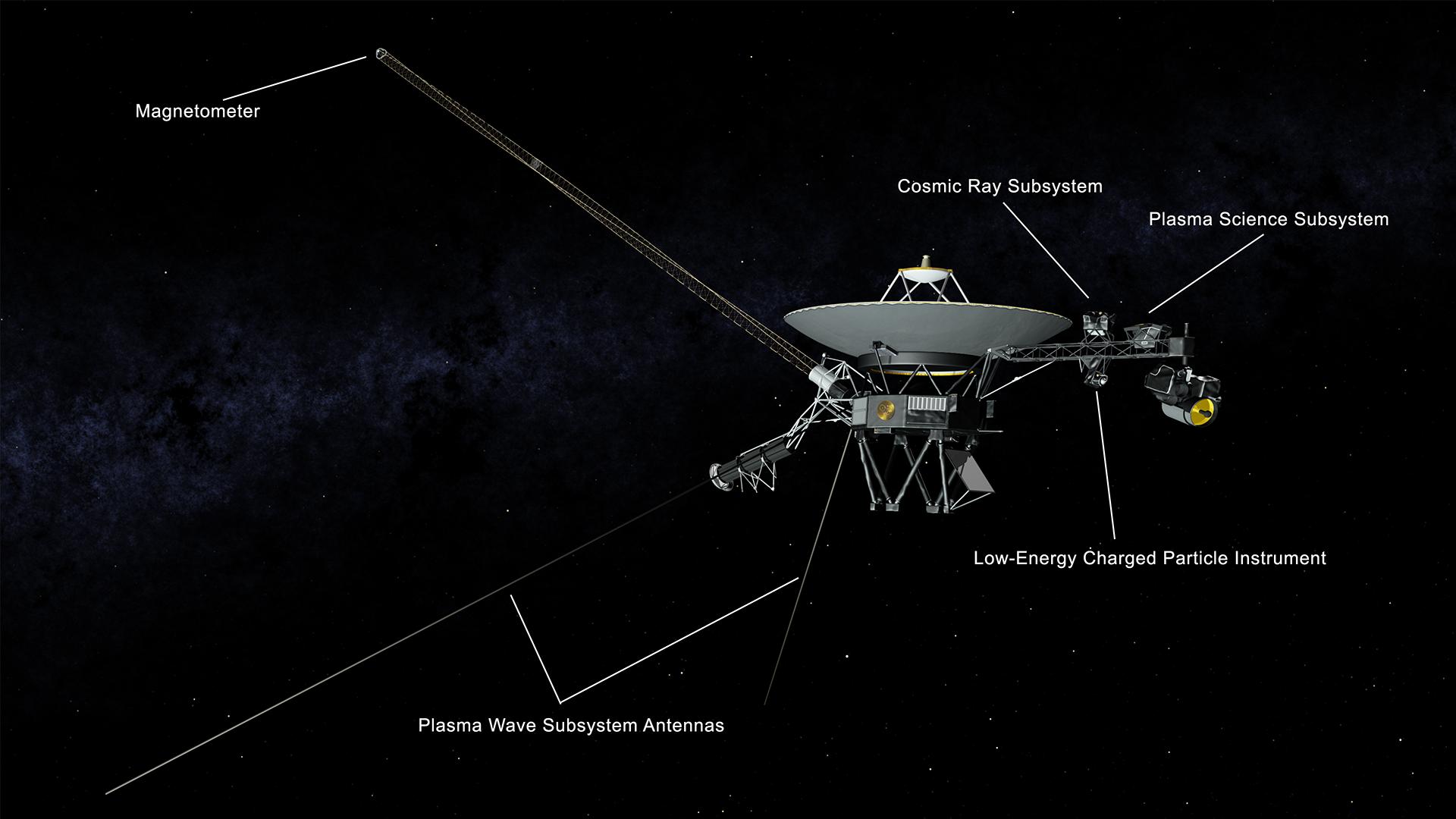
As NASA’s Voyager 1 Surveys Interstellar Space, Its Density Measurements Are Making Waves
Until recently, every spacecraft in history had made all of its measurements inside our heliosphere, the magnetic bubble inflated by our Sun. But on August 25, 2012, NASA’s Voyager 1 changed that. As it crossed the heliosphere’s boundary, it became…

NASA announces new launch date for Boeing's Starliner astronaut-crewed mission
NASA announced the new target launch date for the first astronaut-crewed flight into space aboard Boeing's Starliner after several delays.
The first flight will attempt to launch on Saturday, June 1, at 12:25 p.m. ET, with backup dates set for June 2, June 5 and June 6, the federal space agency said in a blog post late Wednesday.
It comes after the launch of Starliner was delayed several times. The crewed flight test was tentatively scheduled for May 6, but was scrubbed after a problem with an oxygen valve on a rocket from United Launch Alliance (ULA), which manufactures and operates the rockets that launch spacecraft into orbit.
A new launch date had been set for May 25, but a small helium leak was discovered in the service module, which contains support systems and instruments for operating a spacecraft.
"There has been a great deal of exceptional analysis and testing over the last two weeks by the joint NASA, Boeing, and ULA teams to replace the [valve] and troubleshoot the Starliner Service Module helium manifold leak," Steve Stich, manager of the NASA Commercial Crew Program, said in a statement. "It has been important that we take our time to understand all the complexities of each issue."
The Starliner is designed to carry a seven-person crew, but aboard the "test drive" launch will be NASA astronauts Barry Wilmore, 61, a former U.S. Navy captain who will be commanding the flight, and Sunita Williams, 58, a former Navy service member who will be piloting the flight.
Williams and Wilmore are continuing to practice in Starline simulators to prepare for the flight and remain in quarantine at the Johnsons Space Center in Houston. When the new launch date approaches, they will fly back to NASA's Kennedy Space Center in Florida, NASA said.
After Starliner launches into orbit, it will be about a 24-hour journey to the International Space Station (ISS), during which the crew will test several flight objects, such as checking equipment, according to NASA .
Williams and Wilmore are expected to spend one week aboard the ISS and will be evaluating the spacecraft and its systems. Upon re-entry, the spacecraft will deploy parachutes and an airbag system, landing the pair in the western U.S.
NASA and Boeing said a media teleconference will take place on Friday, May 24, during which officials "will provide insight into the next targeted launch opportunity and updates regarding ongoing work."
If the mission is successful, NASA could certify the spacecraft to perform routine missions to and from the ISS. NASA has primarily been using SpaceX's Dragon spacecraft to transport crew and cargo to the ISS.
The missions are part of the larger Commercial Crew Program at NASA, which uses American rockets and spacecraft to launch astronauts and cargo to the ISS with the hope of helping the federal space agency prepare for its upcoming moon and Mars missions.
ABC News' Leah Sarnoff and Gina Sunseri contributed to this report.

New Images From Euclid Mission Reveal Wide View of the Dark Universe

Messier 78 is a nursery of star formation enveloped in a shroud of interstellar dust located 1,300 light-years away from Earth. Using its infrared camera, Euclid exposed hidden regions of star formation for the first time and mapped complex filaments of gas and dust in unprecedented detail.

Galaxy cluster Abell 2764 (top right), imaged by ESA’s Euclid telescope, contains hundreds of galaxies. The area outside the cluster also contains distant galaxies that appear as they did when the universe was only 700 million years old.

Euclid’s view of the Dorado group of galaxies shows signs of galaxies interacting and merging. The shells of hazy white and yellow material, as well as curving “tails” extending into space, are evidence of gravitational interaction between the galaxies.
With NASA contributions, the mission will complement dark energy studies to be made by the agency’s upcoming Nancy Grace Roman Space Telescope.
The Euclid mission , led by ESA (the European Space Agency) with contributions from NASA , has released five new images that showcase the space telescope’s ability to explore two large-scale cosmic mysteries: dark matter and dark energy . Dark matter is an invisible substance five times more common in the universe than “regular” matter but with an unknown composition. “Dark energy” is the name given to the unknown source causing the universe to expand faster and faster.
By 2030, Euclid will create a cosmic map that covers almost a third of the sky, using a field of view that is far wider that than NASA’s Hubble and James Webb space telescopes, which are designed to study smaller areas in finer detail. Scientists will then chart the presence of dark matter with higher precision than ever before. They can also use this map to study how dark energy’s strength has changed over time.
The five new images feature views of varying sizes — from a star-forming region in the Milky Way galaxy to clusters of hundreds of galaxies — and were taken shortly after Euclid’s launch in July 2023 as part of its early release observations program. The mission released five images from that program last year as a preview of what Euclid would offer, before scientists had analyzed the data.
The new images, related science papers, and data are available at the Euclid website . A pre-recorded program by ESA about these findings is available on ESA TV and YouTube .
Mission planners with NASA’s forthcoming Nancy Grace Roman Space Telescope will use Euclid’s findings to inform Roman’s complementary dark energy work. Scientists will use Roman, with its better sensitivity and sharpness, to extend the kind of science Euclid enables by studying fainter and more distant galaxies.
Curved Space

More than 50,000 galaxies are visible in this image of Abell 2390, a galaxy cluster 2.7 billion light-years away from Earth. Near the center of the image, some of the galaxies appear smudged and curved, an effect called strong gravitational lensing that can be used to detect dark matter.
One way Euclid will help scientists study dark matter is by observing how this mysterious phenomenon warps the light from distant galaxies, as seen in one of the new images featuring a cluster of galaxies called Abell 2390. The mass of the galaxy cluster, which includes dark matter, creates curves in space. Light from more distant galaxies traveling over those curves appears to bend or arc, similar to how light looks when passing through the warped glass of an old window. Sometimes the warping is so powerful it can create rings, pronounced arcs, or multiple images of the same galaxy — a phenomenon called strong gravitational lensing.
Scientists interested in exploring the effects of dark energy will primarily look for a subtler effect, called weak gravitational lensing, which requires detailed computer analysis to detect and reveals the presence of even smaller clumps of dark matter. By mapping that dark matter and tracing how these clumps evolve over time, scientists will investigate how the outward acceleration of dark energy has changed dark matter’s distribution.
“Because dark energy is a relatively weak effect, we need larger surveys to give us more data and better statistical precision,” said Mike Seiffert, the NASA project scientist for Euclid at the agency’s Jet Propulsion Laboratory in Southern California. “It’s not something where we can zoom in on one galaxy and study it in detail. We need to look at a much bigger area but still be able to detect these subtle effects. To make that happen, we needed a specialized space telescope like Euclid.”
The telescope uses two instruments that detect different wavelengths of light: the visible-light imager (VIS) and the near-infrared spectrometer and photometer (NISP). Foreground galaxies emit more light in visible wavelengths (those the human eye can perceive), while background galaxies are typically brighter in infrared wavelengths.
“Observing a galaxy cluster with both instruments allows us to see galaxies at a wider range of distances than what we could get using either visible or infrared alone,” said JPL’s Jason Rhodes, principal investigator for NASA’s Euclid dark energy science team. “And Euclid can make these types of deep, wide, high-resolution images hundreds of times faster than other telescopes.”
Discoveries Beyond Dark Energy

Euclid’s large field of view captures the entirety of galaxy NGC 6744 and shows astronomers key areas of star formation. Forming stars is the main way by which galaxies grow and evolve, so these investigations are central to understanding why galaxies look the way they do.
While dark matter and dark energy are central to the Euclid. The mission has a variety of other astronomical applications. Euclid’s large-area sky map can, for instance, be used to discover faint objects and observe changes in cosmic objects, like a star changing in brightness. Euclid’s new science results include the detection of free-floating planets (planets that don’t orbit stars), which are difficult to find because of their faintness. In addition, the data reveals newly discovered brown dwarfs. Thought to form like stars but not quite large enough to begin fusion in their cores, these objects highlight the differences between stars and planets.
Never Miss a Discovery
“The data, images, and scientific papers coming out now mark the very beginning of Euclid’s scientific results, and they show a startlingly wide variety of science beyond the primary objective of the mission,” said Seiffert. “What we’re already seeing from Euclid’s wide view has produced results that study individual planets, features in our home Milky Way galaxy, and the structure of the universe at large scales. It’s both thrilling and a little overwhelming to keep up with all the developments.”
More About the Mission
Three NASA-supported science teams contribute to the Euclid mission. In addition to designing and fabricating the sensor-chip electronics for Euclid’s Near Infrared Spectrometer and Photometer (NISP) instrument, JPL led the procurement and delivery of the NISP detectors as well. Those detectors, along with the sensor chip electronics, were tested at NASA’s Detector Characterization Lab at Goddard Space Flight Center in Greenbelt, Maryland. The Euclid NASA Science Center at IPAC (ENSCI), at Caltech in Pasadena, California, will archive the science data and support U.S.-based science investigations. JPL is a division of Caltech.
For more information about Euclid go to:
https://www.nasa.gov/mission_pages/euclid/main/index.html
For more information about Roman, go to:
https://roman.gsfc.nasa.gov
News Media Contact
Calla Cofield
Jet Propulsion Laboratory, Pasadena, Calif.
626-808-2469

IMAGES
VIDEO
COMMENTS
One-Way Light Time: The elapsed time it takes for light (or radio signals) to travel between the Earth and a celestial object. Note: Because Earth moves around the Sun faster than Voyager 1 or Voyager 2 is traveling from Earth, the one-way light time between Earth and each spacecraft actually decreases at certain times of the year. Cosmic Ray Data
Mission Overview. The twin Voyager 1 and 2 spacecraft are exploring where nothing from Earth has flown before. Continuing on their more-than-40-year journey since their 1977 launches, they each are much farther away from Earth and the sun than Pluto. In August 2012, Voyager 1 made the historic entry into interstellar space, the region between ...
About the mission. Voyager 1 reached interstellar space in August 2012 and is the most distant human-made object in existence. Launched just shortly after its twin spacecraft, Voyager 2, in 1977, Voyager 1 explored the Jovian and Saturnian systems discovering new moons, active volcanoes and a wealth of data about the outer solar system.
Voyager 1 ' s extended mission is expected to continue to return science data until at least 2025, with a maximum lifespan of until 2030. ... but is controlled by an imaging parameter table contained in one of the digital computers, the Flight Data Subsystem (FDS). Since the 1990s, most space probes have been equipped with completely autonomous ...
The probe and its twin, Voyager 2, are the only spacecraft to ever fly in interstellar space (the space between stars). Voyager 1 stopped sending readable science and engineering data back to Earth on Nov. 14, 2023, even though mission controllers could tell the spacecraft was still receiving their commands and otherwise operating normally.
Inside NASA's 5-month fight to save the Voyager 1 mission in interstellar space. The Voyager 1 probe is the most distant human-made object in existence. After a major effort to restore ...
Voyager 1 and its twin Voyager 2 are the only spacecraft ever to operate outside the heliosphere, the protective bubble of particles and magnetic fields generated by the Sun. Voyager 1 reached the interstellar boundary in 2012, while Voyager 2 (traveling slower and in a different direction than its twin) reached it in 2018. Mission Type.
Both Voyager 1 and Voyager 2 have reached "interstellar space" and each continue their unique journey deeper into the cosmos. ... Mission Updates. Voyager Stories. News Media Contacts. Mission. Overview. Status. Science. Timeline. Spacecraft. The Golden Record. ... One-Way Light Time. 22 hours, 34 minutes. 18 hours, 54 minutes. Updated Mar 10 ...
Voyager, NASA's Longest-Lived Mission, Logs 45 Years in Space. Launched in 1977, the twin Voyager probes are NASA's longest-operating mission and the only spacecraft ever to explore interstellar space. ... Engineers are working to resolve an issue with one of Voyager 1's three onboard computers, called the flight data system (FDS). Engineers ...
Voyager 1 was part of a twin-spacecraft mission with Voyager 2. The twin-spacecraft mission took advantage of a rare orbital positioning of Jupiter, Saturn, Uranus, and Neptune that permitted a multiplanet tour with relatively low fuel requirements and flight time. The alignment allowed each spacecraft, following a particular trajectory, to use its fall into a planet's gravitational field to ...
Forty-five years ago, the Voyager 1 spacecraft began an epic journey that continues to this day. The second of a pair of spacecraft, Voyager 1 lifted off on Sept. 5, 1977, 16 days after its twin left on a similar voyage. NASA's Jet Propulsion Laboratory (JPL) in Pasadena, California, managed the two spacecraft on their missions to explore the outer planets.
A poster of the planets and moons visited during the Voyager program. The Voyager program is an American scientific program that employs two interstellar probes, Voyager 1 and Voyager 2.They were launched in 1977 to take advantage of a favorable alignment of the two gas giants Jupiter and Saturn and the ice giants, Uranus and Neptune, to fly near them while collecting data for transmission ...
Voyager 1, one of the celebrated twin spacecraft that was the first to reach interstellar space, ... Mission managers have shut off six of Voyager 1's 10 original instruments. Now that the spacecraft is outside the Sun's protective bubble, its electronics are also vulnerable to strikes from galactic cosmic rays, charged particles ...
What are the Voyager missions? The Voyager program consists of two spacecraft: Voyager 1 and Voyager 2. Voyager 2 was actually launched first, in August 1977, but Voyager 1 was sent on a faster trajectory when it launched about two weeks later. They are the only two functioning spacecraft currently in interstellar space, beyond the environment ...
One of Voyager 1's targets was the F ring, ... The Saturn encounter marked the end of Voyager 1's primary mission. The focus then shifted to tracking the 1,590-pound (720 kg) craft as it sped ...
Today, Voyager 1 is the most distant spacecraft from Earth, more than 14 billion miles away and continuing on its journey out of our solar system. Forty years ago, it made its closest approach to Saturn. Although it was not the first to explore the giant ringed planet, as the Pioneer 11 spacecraft completed the first flyby in 1979, Voyager ...
At approximately 2:10 p.m. Pacific time on February 17, 1998, Voyager 1, launched more than two decades ago, will cruise beyond the Pioneer 10 spacecraft and become the most distant human-created object in space at 10.4 billion kilometers (6.5 billion miles.) The two are headed in almost opposite directions away from the Sun.
Our photographers were two spacecraft, called Voyager 1 and Voyager 2! An artist's rendering of one of the Voyager spacecraft. Image credit: NASA. The Voyager 1 and 2 spacecraft launched from Earth in 1977. Their mission was to explore Jupiter and Saturn—and beyond to the outer planets of our solar system. This was a big task.
The Voyager mission was designed to take advantage of a rare geometric arrangement of the outer planets in the late 1970s and the 1980s which allowed for a four-planet tour for a minimum of propellant and trip time. ... Voyager 2 found that one of the most striking influences of this sideways position is its effect on the tail of the magnetic ...
The Voyager mission was designed to take advantage of a rare geometric arrangement of the outer planets in the late 1970s and the 1980s which allowed for a four-planet tour with a minimum of propellant and trip time. This layout of Jupiter, Saturn, Uranus and Neptune, which occurs about every 175 years, allows a spacecraft on a particular flight path to swing from one planet to the next ...
Voyager 1 is one half of the Voyager mission. It has a twin spacecraft, Voyager 2. Launched in 1977, they were primarily built for a four-year trip to Jupiter and Saturn , expanding on earlier ...
NASA/JPL-Caltech. Not bad for a 46-year-old spacecraft. NASA's Voyager 1 is back in business after a serious glitch in November put a stop to its science work for months. The probe is humanity ...
0:45. After weeks of giving Earth the silent treatment, NASA's Voyager 2 spacecraft is once again communicating with mission control from billions of miles away. All it took was for the ground ...
The efforts should help extend the lifetimes of the agency's interstellar explorers. Engineers for NASA's Voyager mission are taking steps to help make sure both spacecraft, launched in 1977, continue to explore interstellar space for years to come. One effort…
MORE: NASA's Voyager 1 sending readable data back to Earth for 1st time in 5 months. A new launch date had been set for May 25, but a small helium leak was discovered in the service module, which ...
The Euclid mission, led by ESA (the European Space Agency) with contributions from NASA, has released five new images that showcase the space telescope's ability to explore two large-scale cosmic mysteries: dark matter and dark energy.Dark matter is an invisible substance five times more common in the universe than "regular" matter but with an unknown composition.